
Nexus 2024 Full Agenda


- Saturday May 4th
- Sunday May 5th
- Monday May 6th
- Tuesday May 7th
- Business
- Clinical
- CME
- Policy
- Research
- Stakeholder
- Technology
- Book Signing
- Boot Camp
- Case Study
- CEO Spotlight
- Curbside Session
- Deep Dive
- Dinner And Networking
- Discussion And Networking
- Executive Spotlight
- Express Theater Talk
- Fireside Chat
- General Session
- Headliner
- Keynote
- Live Pitch Competition
- Panel Discussion
- Patient Voices
- Presentation
- Research Oral Presentation
- Research Poster Presentation
- Research Poster Session Viewing & Meet Authors
- SIG Meeting (Special Interest Group)
- Special Interest Group (SIG) Meeting
- Special Interest Group (SIG) Showcase
- System Spotlight
- Town Hall
- Workshop
Step into the future of nursing at the ATA Insights Workshop on Virtual Nursing, exclusively curated as a pre-conference event to ATA Nexus 2024. Created by nursing executives for nursing executives, this immersive experience is only open to nursing professionals and executives eager to develop actionable strategies and gain the tools necessary to propel their organizations to new heights. The two-day workshop offers a rich agenda of expert-led sessions, real-world case studies, and collaborative discussions.
Note: Schedule subject to change.
Saturday May 4 2:00 – 5:00 PM
2:00 – 2:10 PM Welcome Opening Remarks
Paul Samargedlis, Senior VP, Business Development and Strategy, ATA
Murielle Beene, DNP, MBA, MPH, MS, RN, NI-BC, PMP, FAMIA, FAAN, Senior VP and CHIO, Trinity Health
Kristi Henderson, DNP, NP-C, FAAN, FAEN, CEO, Confluent Health and Chair, ATA
2:10 – 2:20 PM Setting the Stage: Insights Workshop Orientation
Section 1: Building a Healthy Work Environment
In the dynamic landscape of healthcare, the integration of virtual nursing practices presents both opportunities and challenges. This session delves into the crucial aspects of creating a culture of change within healthcare organizations to effectively embrace virtual nursing.
2:20 – 3:00 PM Panel: Nurturing Change: Empowering Virtual Nursing Through Organizational Adaptation
Participants will explore strategies for assessing organizational readiness, including evaluating existing structures, resources, and stakeholder engagement. Through interactive discussions, we will identify systematic barriers such as challenges and obstacles that hinder the seamless implementation of virtual nursing, examine essential thought processes involved in crafting a robust change strategy to include defining a clear vision for virtual nursing integration, establishing governance frameworks to ensure accountability and oversight, and fostering sustainability models for long-term success. By sharing insights and best practices, this session aims to equip attendees with the tools and knowledge needed to navigate the complexities of virtual nursing implementation and drive positive change within their organizations.
Moderator: Lisa-Mae Williams, PhD, RN, CNO, Intercept Health
Amanda Pate, MSN, OCN, RN-BC, Director of Nursing and Virtual Services, Oncology Care Partners
Melinda Stretzinger, RN, CCRN, Manager, Critical Care Telemedicine & Virtual Nursing, Ochsner Health
Paul Malito, Nursing Director, Tele-ICU, University of Alabama at Birmingham Hospital
Karie Ryan, RN, CENP, CNO, Artisight
3:00 – 3:20 PM Working Group Discussion
3:20 – 3:30 PM Working Group Report-out’s
3:30 – 3:35 PM Transition
3:35 – 3:50 PM Fireside Chat
Noel Khirsukhani, Chief Growth Officer, Andor Health
Jason Swoboda, Director, Innovation, Tampa General Hospital
3:50 – 4:30 PM Panel: Optimizing Virtual Nursing: Strategies for Resource Assessment and Staffing Models
In the evolving landscape of healthcare delivery, optimizing virtual nursing practices requires a comprehensive approach to assessing resources and staffing models. This session offers invaluable insights into effectively navigating the complexities of resource allocation and staffing within virtual nursing programs. Participants will engage in discussions surrounding resource allocation and governance models tailored to support the unique needs of virtual nursing initiatives. We will explore strategies for optimizing staffing within virtual nursing programs, addressing regular staffing challenges where downsizing is not feasible, and fostering flexibility in staffing arrangements. Speakers will share insights in examining key metrics such as nursing hours per patient day and explore modifications to care models to enhance efficiency and efficacy in virtual nursing delivery. Drawing from industry standards such as AACN staffing guidelines and ANA staffing resources, participants will gain practical knowledge to inform their staffing decisions and ensure alignment with best practices. In addition, this session will outline the roles and competencies expected of virtual nurses, competency assessment frameworks and strategies for ensuring the proficiency of virtual nursing staff, thereby enhancing the quality and safety of care delivery.
Moderator: Julie Miller, BSN, RN, CCRN-K, Clinical Practice Specialist-Practice Excellence, American Association of Critical Care Nurses (AACN)
Jada Dockery MSN, RN, NEA-BC, CMSRN, AVP SE Resource Team and Virtual Nursing/Observation Services, Atrium Health
Lisa-Mae Williams, PhD, RN, CNO, Intercept Health
Blake Hoegger, Director of Virtual Care, Texas Oncology
Lisbeth Votruba, MSN, RN, Chief Clinical Officer, AvaSure
4:30 – 4:50 PM Working Group Discussion
4:50 – 5:00 PM Working Group Report-out’s
5:00 PM Close Day 1
5:45 – 6:45 PM Reception at the Renaissance Downtown Phoenix









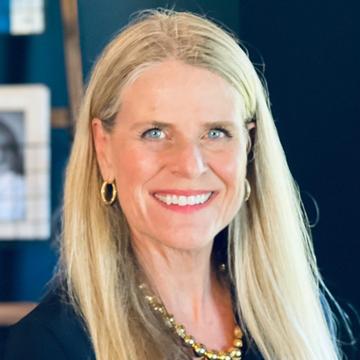




Join us for an evening of recognition and inspiration at the Leadership Awards Dinner, a Nexus 2024 highlight held at the elegant Renaissance in Downtown Phoenix.
This prestigious event celebrates remarkable achievements in virtual care, honoring individuals and organizations that have significantly advanced the adoption of virtual care. The ATA Annual Awards recognize exceptional contributions from expanding access to underserved populations and enhancing patient and provider satisfaction to influencing policy initiatives for telehealth services. This gala is not just an awards ceremony; it’s a testament to the transformative power of virtual care and the visionaries who are reshaping healthcare. Don’t miss this opportunity to celebrate the pioneers who are making healthcare more accessible and effective through their groundbreaking work.
6:30PM: Cocktails
7:00PM: 9:00PM – Dinner & Program
Dress: Business or Cocktail
Add on to registration – separate fee required.
Step into the future of nursing at the ATA Insights Workshop on Virtual Nursing, exclusively curated as a pre-conference event to ATA Nexus 2024. Created by nursing executives for nursing executives, this immersive experience is only open to nursing professionals and executives eager to develop actionable strategies and gain the tools necessary to propel their organizations to new heights. The two-day workshop offers a rich agenda of expert-led sessions, real-world case studies, and collaborative discussions.
Note: Schedule subject to change.
Sunday, May 5 7:30 AM – 1:30 PM
7:30 – 8:15 AM Networking Breakfast
8:15 – 8:25 AM Day 2 Overview, Discuss Learnings from Day 1, etc.
Section 2: Aligning Your Team for Success
Unlocking the full potential of virtual nursing programs requires a strategic approach to mitigate ROI concerns while ensuring quality outcomes. This session is designed to equip healthcare professionals with practical insights and strategies for navigating the complexities of implementing and scaling virtual nursing initiatives.
8:25 – 8:50 AM System Spotlight: Houston Methodist
Aroub Khleif, PhD, Administrative Director, Innovation and Ambulatory and Clinical Systems
Sarah Pletcher, MD, MHCDS, VP and Executive Medical Director, Strategic Innovation, Houston Methodist Medical System
8:50 – 9:30 AM Panel: Choices, Choices: Evaluating Technology and Partner Collaborations
This session will focus on how to implement successful virtual nursing models by navigating crucial decision points and assembling the right resources. Explore the pivotal choice between buying and building technology solutions, considering organizational readiness and resource constraints. Speakers will share practical steps for standing up wireframes and achieving integration, deciphering technical jargon, and ensuring alignment with nursing needs. Gain insights into assembling the right team and fostering effective communication for successful implementation. Join us to ensure your virtual nursing initiatives are equipped with the right tools to meet diverse healthcare needs.
Moderator: Tearsanee Davis, DNP, FNP-BC, PMHNP-BC, FAANP, Director, Clinical Programs and Strategy, UMMC Center for Telehealth, University of Mississippi Medical Center
Denise Pimintel, RN, MN, MS, CCRN-K, System Manager, Clinical, CommonSpirit
Sarah Pletcher, MD, MHCDS, VP and Executive Medical Director, Strategic Innovation, Houston Methodist Medical System
John Sharpe, Principal Product Manager, CommonSpirit Virtual Health
Mauri Williams, RN, MBA/MHA, NE-BC, CSSBB, Vice President, Chief Nursing Informatics Officer, Vice President, Chief Nursing Informatics Officer, UNC Health
9:30 – 9:50 AM Working Group Discussion
9:50 – 10:00 AM Working Group Report-out’s
10:00 – 10:15 AM Fireside Chat: hellocare
Moderator: Murielle Beene, DNP, MBA, MPH, MS, RN, NI-BC, PMP, FAMIA, FAAN, Senior VP and CHIO, Trinity Health
Labinot Bytyqi, Founder & CEO, hellocare
10:15 – 10:30 AM Break
10:30 – 11:10 AM Panel: Strategic Alignment: Navigating the Path to Success
Discover practical insights for optimizing virtual nursing programs, focusing on mitigating ROI concerns, defining quality metrics, and overcoming common barriers. Explore strategies for sustainable scaling aligned with organizational objectives, ensuring enhanced patient care and long-term success.
Moderator: Barbara Edson, RN, MBA/MHA, Executive Director, Virtual Care Center, UNC Health
Summer Blackerby, MSML, BSN, NI-BC, CNIO, Cox Health
Dawn Hatchew, MSN, RN, C-EFM Nursing Practice Associate, Corewell Health
Melinda Stretzinger, RN, CCRN, Manager, Critical Care Telemedicine & Virtual Nursing, Ochsner Health
11:10 – 11:30 AM Working Group Discussion
11:30 – 11:40 AM Working Group Report-out’s
11:40 AM – 12:05 PM System Spotlight: Mayo Clinic
Samantha Holligan, MBA, BSN, RN, N.E.-B.C., Nurse Administrator, Mayo Clinic
Holly Martinez, DNP, MSN, RN, Virtual Care Nurse Manager, Mayo Clinic
12:05 PM – 12:45 PM: Fireside Chat: It’s All About the Data! Exploring the Impact and State of Virtual Nursing – From Research to Quality Outcomes
In recent years, the integration of virtual nursing into healthcare systems has shown promising potential in enhancing patient care, accessibility, and overall healthcare outcomes. However, understanding its effectiveness requires rigorous research and analysis. This session dives into the realm of virtual nursing research, focusing on its effectiveness and contribution to Return on Investment (ROI) in healthcare settings. Speakers will also share best practices in investigating, compiling and publishing research, data and quality outcomes.
Ann Fronczek, PhD, RN, Associate Professor and Director UG and PhD Programs, Decker College of Nursing and Health Sciences, Binghamton University
Saif Khairat, PhD, MPH, FAMIA, Professor and Beerstecher-Blackwell Distinguished Term Scholar, The University of North Carolina at Chapel Hill School of Nursing
12:45 – 1:20 PM Networking Lunch
1:20 – 1:30 PM Discussion
1:30 PM Close










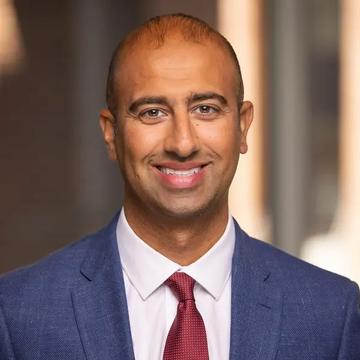

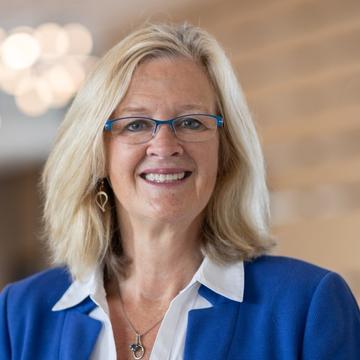

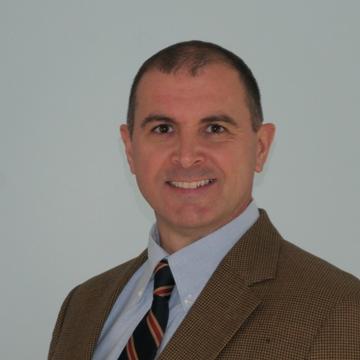





Discover the intricacies of remote monitoring and how it intertwines with cutting-edge technologies to reshape care delivery. This session delves into the interconnection of digital transformation tools with remote monitoring technologies across the entire patient journey, creating new settings for delivery such as Care and Hospital at Home. Uncover insights into reimbursement strategies that transcend traditional codes and delve into settings beyond conventional boundaries. Learn to identify and articulate the Return on Investment (ROI) for a Remote Monitoring program, as we navigate the landscape of evolving care delivery. Discover the intricacies of remote monitoring and how it intertwines with cutting-edge technologies to reshape care delivery. This session delves into the interconnection of digital transformation tools with remote monitoring technologies across the entire patient journey, creating new settings for delivery such as Care and Hospital at Home. Uncover insights into reimbursement strategies that transcend traditional codes and delve into settings beyond conventional boundaries. Learn to identify and articulate the Return on Investment (ROI) for a Remote Monitoring program, as we navigate the landscape of evolving care delivery.
8:45 – 8:50 AM – Welcome
Carrie Nixon, Co-Founder and Managing Partner, Nixon Gwilt Law
Bill Paschall, Senior Vice President, Growth and Strategic Accounts, Clear Arch Health
8:50 – 9:30 AM – The Evolution of Remote Monitoring: From Point Solutions to Integrated Care Management
Carrie Nixon, Nixon Gwilt Law
Bill Paschall, Clear Arch Health
Matt Lisovitch, VP Head of Enterprise Sales, ConnectAmerica
Jason Kressel, COO, Hicuity Health
Leanna Fortunato, PhD, Director of Quality and Innovation, Office of Health Care Innovation, American Psychological Association
Lauren Majors, IBCLC, Consultant, Center for Telehealth, Cincinnati Children’s
9:30 – 10:00 AM – From Volume to Value? The Reimbursement Conundrum
Carrie Nixon, Nixon Gwilt Law
Grace Chen, LucidAct
Charles Dunham, Greengerg Traurig, LLP
Blake Marggraff, Lightbeam Health Solutions
10:00 – 10:30 AM – The Intersection of Remote Monitoring and Digital Therapeutics
Carrie Nixon, Nixon Gwilt Law
Jessica Hauflaire, COO, Digital Therapeutics Alliance
Micah McClelland, Chief Evangelist / Co-Founder, Rheumera
Michael Schellhous, Counsel, Nixon Gwilt Law
10:30 – 11:00 AM – Solutions to Tie in Tech Equity and Social Determinants of Health
Bill Paschall, Clear Arch Health
Kathy Duckett, MSN, RN, Clinical Director, Tufts Medicine Care at Home
Dr. Daniel Barbara, CEO, Desert Senita Community Health Center
11:00 – 11:40 AM – Integrating Tech for Care in the Home
Moderator: Bill Paschall, Clear Arch Health
Caroline Yang, Associate Clinical Director, Mass General Brigham Healthcare at Home, Mass General Brigham
Ryan Fox, Strategic Director, Virtual Care at Home, GE Healthcare
Chanice Howard, MPH, Operations Manager, Comprehensive Cancer Center, Mayo Clinic
John Quattrochhi, Operations Manager, Geisinger
11:40 AM – 12:00 PM – Fireside Chat: The Future of Remote Monitoring and Care Delivery
Jim Mault, MD, FACS, CEO and Chairman, BioIntellisense
Sarah Pletcher, MD, MHCDS, VP and Executive Medical Director, Strategic Innovation, Houston Methodist
12:00 PM – Closing Remarks
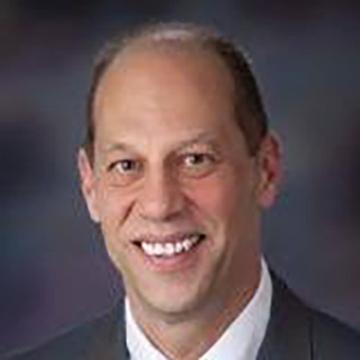
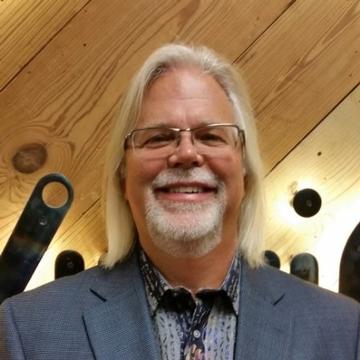




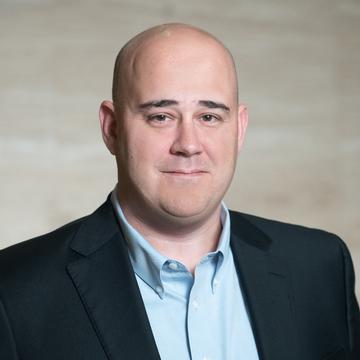












This dynamic session explores the revolutionary impact of virtual care across key specialties such as oncology, musculoskeletal (MSK), behavioral health and metabolic care. Discover how virtual care is reshaping traditional approaches, bringing forth innovative solutions, and enhancing patient outcomes in these critical medical domains. Join us as we navigate the transformative landscape, unlocking the potential of virtual care to revolutionize and elevate specialized healthcare services.
8:45 – 8:50AM Welcome
Tania Elliott, MD, FAAAAI, FACAAI, CEO and Founder, Modern Medical
8:50 – 9:15 AM Fireside Chat: The Path to Positive Disruption: How Virtual Care is Transforming Specialty Care
Tania Elliot
Sameer Berry, MD, MBA, CMO, Oshi Health
9:15 – 9:40 AM Fireside chat: Fireside chat: Redefining MSK Care through Digital Innovation
This session will explore how digital innovation is transforming the landscape of musculoskeletal (MSK) care. From evaluation to tele-rehabilitation, advancements in digital health are revolutionizing the way MSK conditions are diagnosed, managed, and treated. Speakers will uncover the latest breakthroughs, best practices, and future trends in leveraging technology to enhance patient outcomes, improve access to care, and optimize the delivery of MSK services.
Moderator: Kristi Henderson, DNP, NP-C, FAAN, CEO, Confluent
David King, President and COO, RightMove
JeMe Cioppa-Mosca, Senior VP, Hospital for Special Surgery
9:40 – 10:00 AM Fireside Chat: Evaluating Virtual Solutions in Specialty Care
Moderator: Joseph Kvedar, MD, Professor, Harvard Medical School; Editor-in-chief, npj Digital Medicine; Immediate Past Chair, ATA; Senior Advisor, Mass General Hospital Center for Innovation in Digital HealthCare
Caroline Pearson, Executive Director, Peterson Health Technology Institute
10:00 – 10:35 AM Transforming Mental Health
As technology continues to advance, so does its integration into mental health services. In this session, we delve into the innovative realm of virtual care and its profound impact on behavioral health. Speakers will explore the myriad ways in which virtual care is revolutionizing the landscape of behavioral health, from expanding access to services, enhancing treatment options, to overcoming barriers of stigma and distance. Learn about the latest advancements, promising practices, and potential challenges in this dynamic intersection of technology and mental wellness.
Moderator: Jéna Grady, Partner, Nixon Peabody
Gabe Diop, Co-Founder, Rula
Susan Solinsky, Co-Founder and Chief Growth Officer Ellipsis
Melita King, MD, MA, Principal, Health Management Associates
Holly Dubois, MD, CMO, Connections Health Solutions
10:35 – 11:10 AM Empowering Cancer Care
This insightful discussion will explore how virtual care is reshaping the landscape of oncology treatment. From remote consultations to digital monitoring tools, technology is revolutionizing the way cancer patients receive care. Speakers will discuss the profound impact of virtual care on oncology, including increased accessibility, personalized treatment approaches, and improved patient outcomes. Discover the latest innovations, challenges, and opportunities in leveraging virtual platforms to deliver comprehensive and compassionate cancer care.
Moderator: Shannon MacDonald, MD, Radiation Oncologist, Mass General Brigham
K.R. Prabha, VP, Strategy, Growth and Innovation, Optum
Chevon Rariy, MD, Senior Vice President, Digital Health, Oncology Care Partners
Leah Rosengaus, MSC, Director, Digital Health, Stanford Health Care
11:10 – 11:35 AM Fireside Chat: Twin Health and Metabolic Disease Reversal
Moderator: Anuja Vaidya, Senior Editor and Special Events Lead, mHealthIntelligence
Bree Willis, Medical Director, Twin Health
11:35 AM – 12:10 PM – Revolutionizing Specialty Care: The Future of Virtual Care Solutions and Tech
Virtual care solutions and cutting-edge technology are redefining the boundaries of specialty care and healthcare delivery. From behavioral health to oncology and musculoskeletal (MSK) disorders, the integration of virtual care platforms promises unprecedented accessibility, efficiency, and efficacy in patient outcomes. Furthermore, the concept of global peer-to-peer consultations is transforming the landscape of specialty care, facilitating collaboration and knowledge exchange among healthcare professionals worldwide. Join us as we explore the future of specialty care, where virtual care solutions and technology converge to empower patients, enhance provider collaboration, and revolutionize the delivery of healthcare across diverse specialty areas.
Moderator: Tania Elliott
Sara Gibson, Psychiatrist, Telemedicine Medical Director, BCBS AZ
Charles Fisher, Pt, MPT, MBA, Vice President, Rehabilitation and Performance, Hospital for Special Surgery
Mary Mulcare, MD, CMO, Summus Global
Leah Rosengaus, MSC, Director, Digital Health, Stanford Health Care
12:10 PM Close






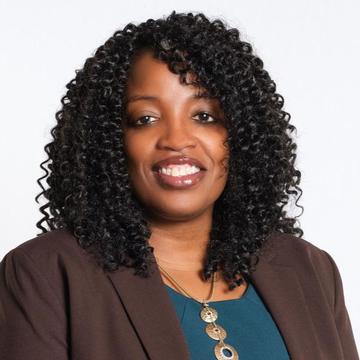
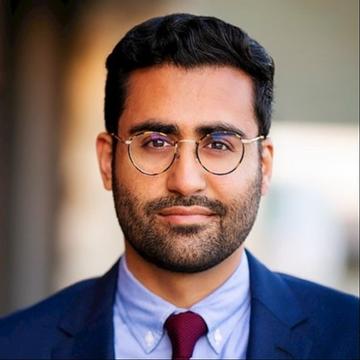



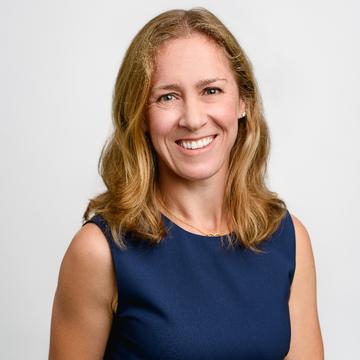

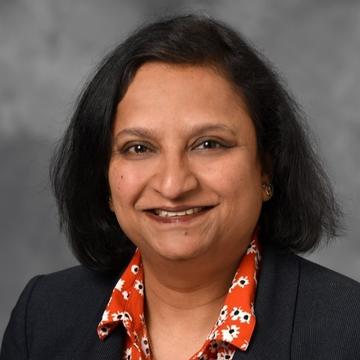







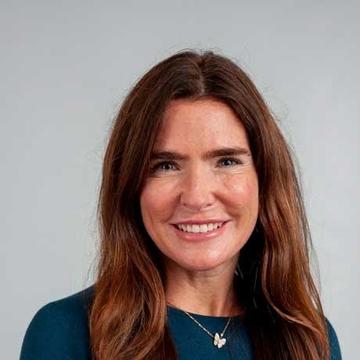
8:45 – 8:50 AM Welcome and Overview
Nate Lacktman, Partner and Chair, Telemedicine & Digital Health Industry Team, Foley & Lardner
8:50 – 9:10 AM 50-State Telehealth Practice Laws: An Assessment of the Pre- and Post-PHE Landscape
Quinn Shean, Senior Advisor, Tusk Venture Partners
Jacqueline Acosta, Special Counsel, Foley & Lardner
9:10 – 9:30 AM Influencers and Social Media Marketing for Digital Health Companies
Rachel Goodman, Partner, Foley & Lardner
Jaide Beverly, Associate, Foley & Lardner
9:30 – 10:00 AM Cutting Edge of Digital Health Privacy Law
Jessica Rigsby, VP of Legal and Compliance, Ophelia Health
Kristen Rosati, Partner, Coppersmith Brockelman
Jennifer Hennessy, Partner, Foley & Lardner
10:00 – 10:20 AM Legal and Reimbursement of Remote Digital Health Technologies (RPM, RTM, Digital Therapeutics, AI)
Carol Yarbrough, Business Operations Manager, Telehealth Resource Center at UCSF Medical Center
Thomas (TJ) Ferrante, Partner, Foley & Lardner
10:20 – 10:40 AM Multistate Telemedicine Prescribing of Controlled Substances
Nathan Beaver, Partner, Foley & Lardner
Evan Hellman, Senior Counsel, Foley & Lardner
10:40 – 11:25 Telehealth Joint Ventures, Pilots, and Collaborations
Eric Yecies, General Counsel, LifeMD
Rebecca Simone, Partner, Nixon Peabody
David Sanders, Partner, Foley & Lardner
11:25 – 11:45 AM Q&A












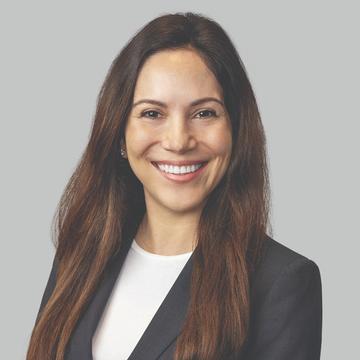

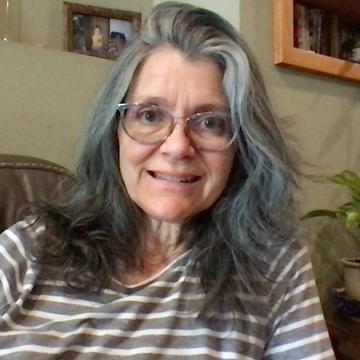
Embarking on an exploration of the AR and VR landscape, experts will delve into the current state of the industry and discuss how immersive tech can impact healthcare delivery. This program will explore groundbreaking applications of these technologies in pain management, education, surgical assistance, and simulation as well evolving strategies for reimbursement in the dynamic realm of AR and VR. Join us as we unravel the multifaceted elements of these immersive technologies and explore their transformative potential in healthcare.
8:45 AM Welcome
Bob Fine, Executive Director, International Virtual Reality and Healthcare Association
8:45 – 9:30 AM
Walter Greenleaf, PhD, Medical VR/AR Expert, Stanford Virtual Human Interaction Lab
9:30 – 10:00 AM
Giselle Ricur, MD, Executive Director, Virtual Care, Bascom Palmer Eye Institute at the University of Miami Health System
10:00 – 10:30 AM
Habib Noorbhai, PhD, Visiting Professor, MIT and Professor, Health & Sports Science and Director, Biomedical Engineering and Healthcare Technology Research Centre, Faculty of Health Sciences, Univ of Johanessburg
10:30 – 10:40 AM
Break
10:40 – 11:10 AM
Jonathan Tang, Recreation Therapist, U.S. Department of Veterans Administration
11:10 – 11:40 AM
Thom Belda, Enterprise Simulation Technology Architech, Mayo Clinic
11:40 AM – 12:10 PM
Kaitlyn O’Connor, Esq. Partner, Nixon Gwilt
12:15 PM
Close

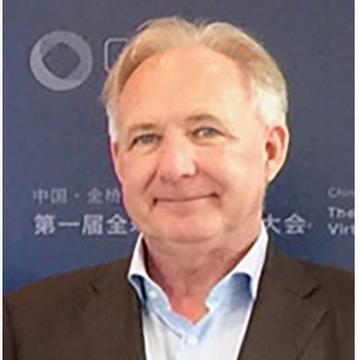





Delivering a consistent best in class call experience for both physicians and patients can be difficult. Different device types, network conditions, and locations coupled with varying degrees of digital knowledge can make it challenging to optimize call quality for all users. In this session you will learn about best practices to maximize the quality of your physician/patient sessions and we will discuss the digital innovations that can help improve the user experience on your telehealth platform.
Feelin’ Alright: How the Message in the Music Can Make Healthcare Healthier
Books available for purchase through Barnes and Noble, Booth #1037 (P).

As the demand for mental health services rises, insurance companies, therapists, clients, employers, and telehealth startups grapple with defining and measuring quality care. In a landscape lacking a unified definition of 'quality,' stakeholders seek to align on value-based care models to ensure effective care delivery and cost reduction. This session will delve into the broader understanding of quality in mental health care, examining how stakeholders can collaborate to establish holistic measurement methods for accurate outcomes assessment. Speakers will also discuss the concept of quality-first care in virtual settings, emphasizing measurement-based care (MBC). Research demonstrates that MBC drives superior health outcomes by enabling faster diagnoses, symptom reduction, and improved care. Telehealth platforms facilitate MBC implementation, offering real-time insights into treatment progress and enhancing therapist-patient relationships. By continually measuring patient experience and therapeutic alliance, virtual platforms ensure a comprehensive approach to care delivery, reducing the risk of dropout and enhancing treatment efficacy. Join us in reimagining mental health care, where quality and access converge to optimize outcomes for all stakeholders.



This pilot project identified vulnerable pediatric patients ages 6-12 with Attention Deficit Hyperactivity Disorder (ADHD) and explored whether providing a device with stable internet for one year would improve outcomes including access to care through telemedicine in this urban primary care network.

To describe the innovative approach of leveraging AI technology by Aravind Eye Hospital for early detection and intervention of diabetic retinopathy (DR) in rural areas of Tamil Nadu, in the southern state of India, where accessible screening facilities and trained ophthalmologists are limited.

Mental health conditions affect 43.8 million Americans, of whom 60% have not received treatment in the past year due to geography, cost, or other factors.1 The study objective was to describe clinical outcomes of patients with symptoms of depression and/or anxiety managed through an asynchronous telemedicine care model.
1https://www.nami.org/nami/media/nami-media/infographics/generalmhfacts.pdf

Since the start of the COVID-19 pandemic, there have been significant advances in telehealth. The focus has been on quantitative physiologic measures, such as vital signs, that are sent to a care team. However, an important opportunity exists to leverage telehealth using patient-reported outcomes and monitoring patient needs.

Telehealth policy stands at a major precipice this year as Congress considers whether or how to extend the flexibilities for telehealth granted under the Public Health Emergency. As these considerations begin, it is incredibly important to take note of the lessons learned during the COVID-19 pandemic. The Muscular Dystrophy Association would like to spotlight the incredible impact telehealth has had on the neuromuscular disease community, as these flexibilities have enabled much more robust access to much-needed care, and we look forward to speaking with you about the policy implications therein.

Hear about the implementation of a nation-wide program centered on TeleWound care. It will review technology utilized including 3D wound imaging, video conferencing, store and forward patient provided images, and secure messaging. The topic will also cover barriers and best practices that have been learned.

Explore the transformative impact of dental-medical integrated care, where research reveals a remarkable 27% reduction in risk scores and a 17% decrease in medical costs. This session illuminates how incorporating oral care into telehealth services not only improves patient care but also generates additional revenue, offering a mutually beneficial scenario for companies and patients alike. Key Components of Integration: Reduce the risk of oral disease. Provide a virtual dentist 24/7 wherever/whenever a dentist is needed. Provide quality patient care and accurate assessment, in real time, by a subject-matter expert. Pro-active patient assistance identifying appropriate follow-up care and enabling that appointment. Reduce the number of unnecessary ER visits. Additional Goals for Hospitals: Increase Emergency Room patient satisfaction – No more long waits for emergent oral issues. Relieve ER doctors of Level 1 oral care issues, Reduce opioid Rx risk. EMR/EDR Interfaces/Information, Sharing Oral Health Screenings included in Medical Health Screenings. Patient/Caregiver Educational Materials on Preventive Therapies. Referral Process, Case Management, Warm-Handoffs, Designated Access Appointments, ALL by integrating Oral Health Services in Primary Care. Join this session to understand how integrating oral health services into primary care not only enhances patient outcomes but also optimizes revenue streams while transforming the healthcare landscape.
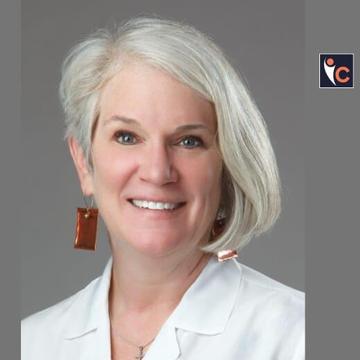
We assessed the sociodemographic characteristics, healthcare resource utilization (HCRU), and medical expenditures related to tele-mental health (TMH) among pediatric patients at the academic medical center in Mississippi. Our findings revealed sociodemographic disparities in TMH use and underscored the potential of TMH services in expanding access to pediatric mental healthcare.

Telehealth can be utilizied for ACP (Advanced Care Planning) as it faciliate having multiple participants joining from remote locations. Thus conducted, ACP for those patients with Alzheimer's Disease-Related Disorders has been shown to reduce costs for admission and readmission to hospital.

This talk will discuss the advantages of using telemedicine when executing clinical trials and the legal and regulatory considerations when utilizing telemedicine in the conduct of clinical trials. Specific topics include: research as the practice of medicine, telemedicine practice standards, and FDA guidance regarding decentralized clinical trials. Participants will gain an understanding of how to conducting decentralized clinical trials compliantly.
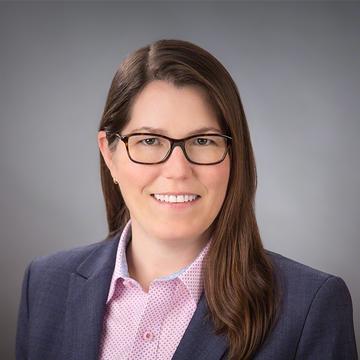
Traditional follow-up care after an initial hearing aid fitting can be time consuming and inconvenient. Offering hearing aid follow up care virtually has been successful, and even preferred, across all age groups. Emerging tools and technology have enabled dynamic and adaptive options to create a more holistic and personalized hearing care journey. These tools will change the way services are delivered without sacrificing quality of care, In fact, delivering services remotely for hearing aids can even address real-world situations, which are challenging to recreate in a controlled environment, such as an office fitting room.


Hacking Healthcare
AI in Health: A Leader’s Guide to Winning in the New Age of Intelligent Health
Books available for purchase through Barnes and Noble, Booth #1037 (P).

In the pursuit of enhancing the care and outcomes of pediatric lung transplant recipients, we have designed a comprehensive framework for implementing Remote Patient Monitoring (RPM), revolutionizing post-transplant care for young recipients.
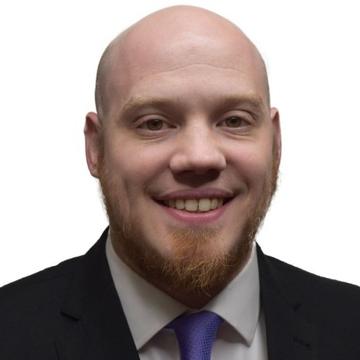
Effective population health management requires judicious allocation of resources to ensure the needs of the most at-risk patients are met. Identifying who is most likely to benefit from a clinical pharmacist’s care further increases a program’s ability to create a positive return on investment.

In today’s healthcare landscape, the demand for specialized medical services continues to rise, leaving many healthcare facilities struggling to meet the needs of their patient populations. Hard-to-fill specialties such as cardiology, rheumatology, oncology, infectious disease, and pediatric neurology often pose significant challenges for healthcare organizations in recruiting and retaining on-site staff. Through presentation of real-world, current case studies, this session will explore utilizing flexible, hybrid approaches to expand service lines to healthcare facilities lacking on-site expertise. This session will emphasize using customized, innovative models to expand access to specialized care, improve patient outcomes, and enhance the sustainability of healthcare facilities, even in the face of staffing challenges.

The CARIN Alliance is a multi-sector group of stakeholders representing numerous hospitals, thousands of physicians and clinicians, and millions of patients and other consumers and caregivers. Specifically, we are promoting the ability for consumers and their authorized caregivers to gain digital access to their health information via the open Application Programming Interfaces. Working collaboratively with government leaders, the CARIN Alliance seeks to rapidly advance the ability for consumers and their authorized caregivers to easily get, use, and share their digital health information when, where, and how they want to achieve their goals. With a membership composed of consumers and patients and caregiver organizations, health care entities, health information technology developers and others, this alliance is uniquely positioned at the intersection of public and private organizations to advance the development of person-centered, value-driven health care through the adoption of consumer-directed health information exchange. This session will feature the CARIN Digital Insurance Card, that enables consumers and authorized caregivers to access more of their digital health information with less friction.

We determined the car travel distance between participants in a large, proportional sample of U.S. telemedicine sessions using Google distance matrix, as the basis for estimating carbon dioxide (CO2) emissions costs and savings associated with telemedicine.
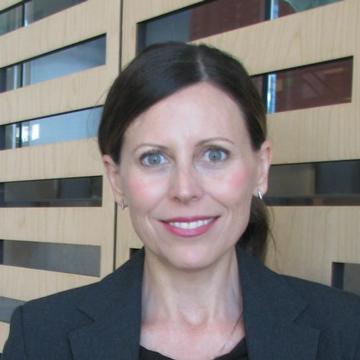
This study evaluates the efficacy and innovative interventions of the CCBH Program in delivering virtual behavioral health services. It explores volumes, time and travel savings, patient-reported outcomes, and improved accessibility and quality of behavioral health services since November 2020, offering critical insights into the program’s substantial impact.

The rise of telemedicine drives the adoption of wearable technologies to collect objective data at home to monitor and diagnose patients. This data enables a richer remote conversation between the providers and patients, and empowers patients and caregivers in a way that supports healthcare decentralization. This session will explore examples of the use of medical wearables with different patient populations, lessons learned, and what the future looks like in two, five, and ten years from now.

VRx: How Virtual Therapeutics Will Revolutionize Medicine
Books available for purchase through Barnes and Noble, Booth #1037 (P).

As the shortage of primary care physicians continues to climb, the demand for care has placed ever-larger workloads on doctors today, resulting in burnout and putting optimal patient care at risk. This unnecessary burden is finding some relief in the application of AI technology to remove excessive administrative tasks from doctor/patient interactions, making them less transactional and more personal. Many providers today are evaluating how to effectively integrate AI solutions to help streamline workflows, such as recording and transcribing a conversation between a doctor and a patient, but also summarize, organize and tag it – even utilizing generative AI to propose subsequent actions or treatment strategies grounded in established knowledge repositories. – giving doctors more time and energy to provide the very best care and to form the close relationships with patients that are so valuable to patient-centered outcomes.
This session will explore the rise in AI in healthcare and how it can make all the difference for both providers, staff and, most importantly, their patients. Takeaways will include:
• Where to start – how to choose the best provider, from best of breed to a single, integrated solution
• Best practices for integrating AI technology into an existing tech stack
• How to overcome barriers to adoption among staff and patients


Virtual visits involve different workflows than in-person visits. We hypothesized that providing virtual visit support by a centralized team, staffed by nurses and medical assistants trained in standardized processes for virtual visit preparation, technical support, patient intake, and wrap-up tasks, would improve efficiency and access compared to usual virtual care support.
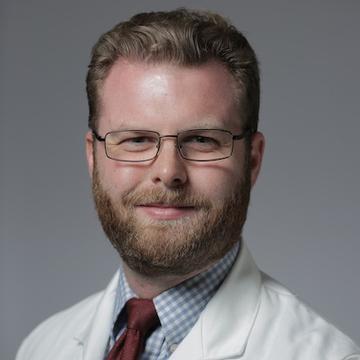
Over 130,000 patients with kidney failure in the United States await kidney transplantation. Living kidney donation reduces the wait time and provides superior graft and patient survival. Yet, the number of donors has declined over the last two decades. Access to transplant centers can become a barrier for willing donors.

We are in a consumer-driven healthcare environment, with technology-powered convenience at the forefront of patients’ expectations. Speakers from XiFin will provide an overview of key macro healthcare trends creating new avenues for growth and profitability in telehealth, home health, and remote patient monitoring sectors, tips on adapting business strategies to an ever-changing reimbursement landscape and how to maximize market access, payor coverage, and reimbursement while keeping the cost to collect low.

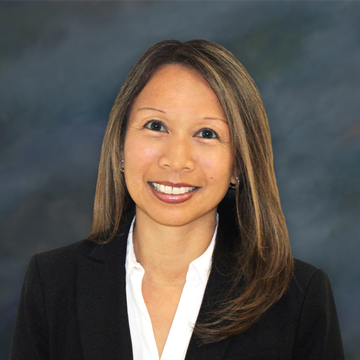







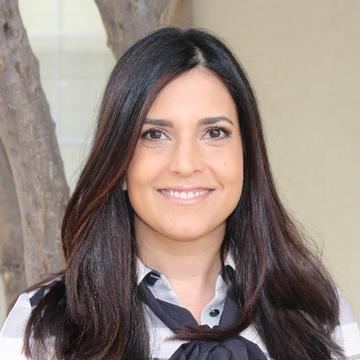


In an era saturated with AI buzzwords and promises, separating hype from genuine value has become paramount for health leaders seeking tangible results. This session delves into the essential components necessary for AI to deliver measurable impact at scale within the healthcare sector. Through real-world lessons and experiences, speakers will share invaluable insights into navigating the complexities of AI transformation. From initial implementation hurdles to sustaining long-term success, attendees will gain actionable strategies and best practices for leveraging AI effectively in healthcare and driving meaningful organizational change.



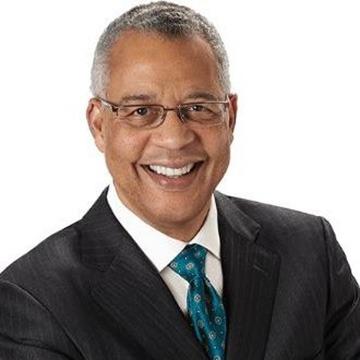


Join us for an enlightening session featuring Dr. Brennan Spiegel, renowned expert and Director of Health Services Research at Cedars-Sinai, as he shares his visionary insights into the transformative potential of Augmented Reality (AR), Virtual Reality (VR) and Medical Extended Reality (MXR) in healthcare. Gain invaluable insights from one of the industry's leading experts and discover how these emerging technologies are poised to revolutionize healthcare as we know it.


Join Dr. Stephen Klasko as he challenges the status quo in healthcare by advocating for the importance of taking risks. Drawing from his extensive experience, Dr. Klasko, joined by Jessica DaMassa, will discuss how the reluctance to embrace innovation poses the biggest risk for health systems today. Looking ahead to 2034, he will offer insights into the transformative changes that will define the healthcare landscape. Participants will explore key trends, technologies, and societal shifts shaping the future of healthcare delivery.


Join Shiv Gopalkrishnan, Philips EMR & Care Management Business Leader for an executive spotlight hosted by Helen Hughes MD, Medical Director, Office of Telemedicine at Johns Hopkins Medicine, as they share their insights on the importance of revolutionizing inpatient care delivery through innovative telehealth solutions with immediate, measurable impact.
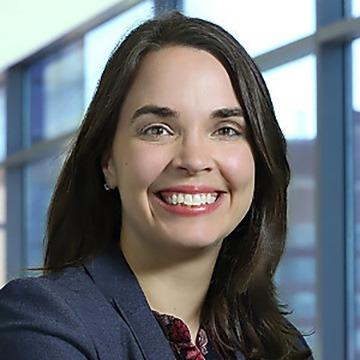







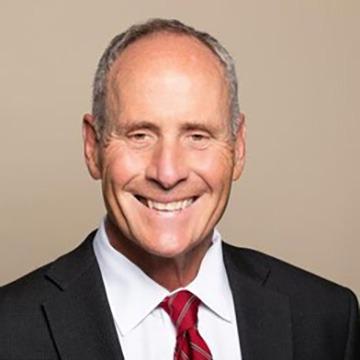





Deference to clinical indication is a core tenant of ensuring telehealth is fully integrated into the healthcare system. It ensures that patients have medically appropriate access to telehealth care and that medically unnecessary in-person requirements are avoided. This is especially important when considering stigmatized services, such as sexual & reproductive healthcare as telehealth presents great opportunities to address outcome disparities based on geography, race, sexual orientation, socioeconomic status, etc.. This panel will review the myriad ways that telehealth in the reproductive health spectrum can benefit patient care, including the potential impact on maternal mortality, and review the importance of this central tenant of telehealth to ensure expanded access to timely care and cost savings.
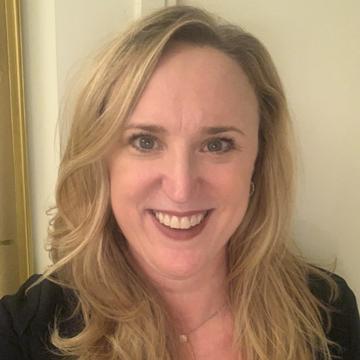



In an era where healthcare leaders are tasked with stabilizing workforces, reducing burnout, and enhancing patient experiences while managing costs, the integration of cutting-edge technology has become paramount. In this session, we’ll explore the hospital room of the future. From telemedicine breaking down geographical barriers to AI revolutionizing patient monitoring, this panel will delve into the transformative power of innovation. Speakers will explore virtual care’s role in reshaping specialist and inpatient care, how real-time translation technology is fostering health equity by breaking language barriers, the role of AI-driven telehealth solutions to enhance patient monitoring, reducing falls, and optimizing resource allocation – empowering caregivers to focus on personalized patient care, and the future of AI with ambient intelligence to facilitate proactive care delivery and enhance human interaction in healthcare settings. Join us in envisioning the hospital room of the future, where technology serves as a catalyst for transformative care delivery, fostering better outcomes for patients and providers alike.



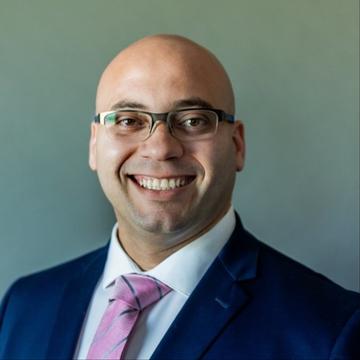


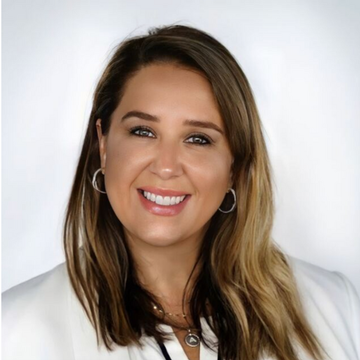



The AMA Physician Innovation Network (PIN) connects industry stakeholders who work collaboratively to bring better solutions to the market. Join us to network with leading physicians and discuss topics with like-minded physicians around scaling digitally enabled care, physician leadership and entrepreneurship, and what’s needed to implement, scale and evaluate telehealth.



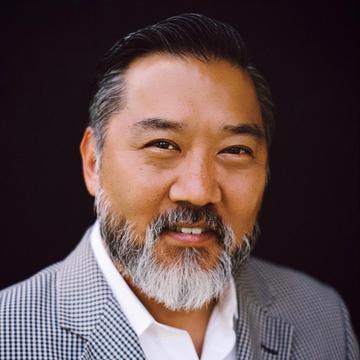










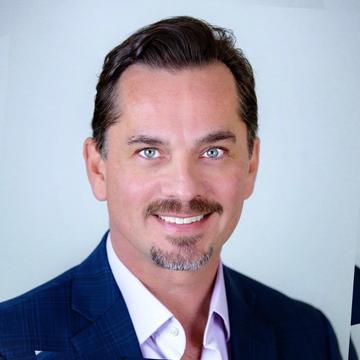
This engaging discussion will shine a light on the pressing issues surrounding mental health care, featuring experts from various fields. From substance use therapy and advocating for mental well-being legislation to breaking the stigma surrounding mental health, our panelists will explore the challenges and opportunities in reaching underserved and minority communities. We'll delve into the importance of creating a unified model for mental health care and the crucial role of innovative therapies and Medicaid coverage for substance use disorder (SUD). Additionally, we'll examine how virtual health technologies can expand access to care, ensuring that everyone has the support they need for their mental well-being. Don't miss this insightful conversation on building a more inclusive and effective mental health care system for all.






Prior to and since the pandemic, healthcare has experienced an increasing shift in the types of care models being offered to the aging population. Hospital-at-Home, Value Based Care Providers, Palliative, and Hospice Care programs are key models serving this aging community and have incorporated the use of telehealth to promote clinical outcomes and mitigate logistical complexity. We will discuss these models, how telehealth is operationalized, and how telehealth data is being used to support the delivery of timely and effective care.






Unlocking the full potential of telehealth and virtual care hinges on seamless data integrations and interoperability. Despite the buzz surrounding interoperability, many healthcare institutions still grapple with disjointed systems.Industry experts will shed light on the hurdles obstructing interoperability progress and explore the tangible impacts of data silos on telehealth programs and patient care quality. Gain valuable perspectives on safeguarding patient data while enhancing accessibility to empower patients and optimize their healthcare experiences.
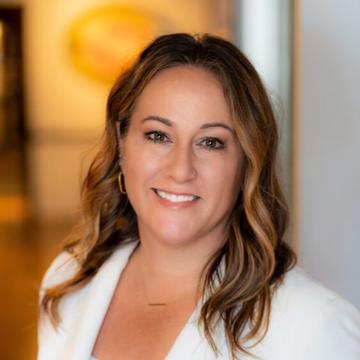






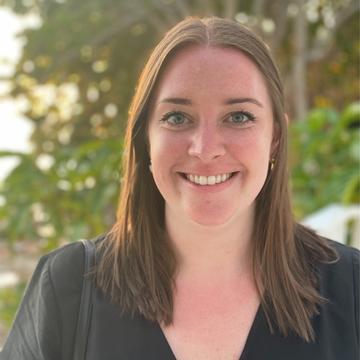


Step into a night of exhilaration and high spirits at Nexus 2024’s Casino Night! This dazzling evening promises a thrilling blend of classic casino games, from blackjack to roulette, all set in a vibrant atmosphere. Mingle with fellow attendees, enjoy light-hearted competition, and try your luck at winning big. It’s not just about the games; it’s about the unforgettable memories you’ll create. Don’t miss out on this exciting and entertaining highlight of Nexus 2024!
Join Dr. Alain Labrique of the WHO as he explores the critical need for integrating digital healthcare worldwide. Discover the successes and obstacles faced on a global scale, with insights into key achievements and pressing challenges. Gain perspectives on achieving comprehensive integration in the dynamic landscape of digital healthcare, and contribute to the dialogue on shaping its future.


Join us for an engaging fireside chat with Clare Martorana, Federal Chief Information Officer at The White House, and Ardy Arianpour, CEO & Co-Founder, Seqster, as we delve into pivotal topics shaping the future of healthcare delivery. From telehealth advancements to regulatory oversight and research and development initiatives, discover how the federal government is prioritizing the delivery of services to the American public in ways that align with their preferences. Gain insights into the intricate depth of the federal ecosystem, explore the role of AI in healthcare innovation, and learn about strategies for fostering patient involvement in their own healthcare journey. Explore critical issues such as data privacy, transparency, and security, and delve into the principles of human-centered policy design. Uncover the importance of cybersecurity measures in safeguarding healthcare systems and reaffirm the collective commitment to working for the patient’s best interests.


Discover how virtual nursing improves patient safety, nurse satisfaction, and saves costs in healthcare. Hellocare CEO Labinot Bytyqi will share his insights into and vision for the future of healthcare delivery.


Strategic partnerships are key to addressing the biggest challenges in healthcare and achieving your goals. This innovative panel featuring leaders from General Catalyst, OSF HealthCare and Fabric will focus on how partnerships can create a more proactive, affordable, and equitable care system.


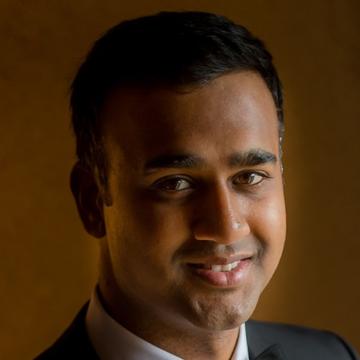


Daily CEO Kwindla Hultman Kramer leads a discussion with Dr. Yin Ho, CEO of Veradigm (formerly Allscripts) and Will Manidis, Science IO CEO, on the near-future of data-enriched healthcare, virtual care, and AI. Veradigm recently acquired ScienceIO, and is building generative AI — including ScienceIO’s healthcare-specific Large Language Models — into its solutions serving over 400,000 providers and 200 million patients. The panel will consider how AI can contribute to not just efficiency but efficacy of care, as well as how virtual care clinicians and leaders can contribute to the discussions around AI.










Industry visionaries Glen Tullman, CEO of Transcarent, and Tom Grote, CEO of Banner Aetna, will explore the challenges, triumphs, and future possibilities in healthcare delivery and technology integration. With the integration of telehealth becoming increasingly vital in healthcare delivery, Tullman and Grote will share their strategies for successfully incorporating telehealth services for their members. Discover firsthand the member response and engagement, as well as the transformative impact on healthcare accessibility and convenience.


Telehealth is transforming the way healthcare is delivered, especially in the field of lifestyle medicine. With the help of technology, telehealth is breaking down barriers to care, making it possible for patients to access evidence-based lifestyle interventions at any time and from anywhere. Telehealth not only increases access to care but also makes it easier to incorporate interdisciplinary teams to provide a person-centered, whole-person approach that focuses on behavior change. The field of lifestyle medicine has embraced various telehealth care models, and virtual lifestyle medicine shared medical appointments (LM SMAs) are the future of a transformed, scalable, and sustainable healthcare delivery system.
There are substantive similarities between the current wave of AI and the prior waves of telehealth and digital expansion. So what can we learn from the past as we prepare for the AI future? Join our team as we discuss a legal framework for privacy and security, overview AI policy at the federal and state level, and discuss how digital health companies and provider systems can best position themselves to take advantage (and mitigate risk) of these new technologies.



Telehealth is transforming the way healthcare is delivered, especially in the field of lifestyle medicine. With the help of technology, telehealth is breaking down barriers to care, making it possible for patients to access evidence-based lifestyle interventions at any time and from anywhere. Telehealth not only increases access to care but also makes it easier to incorporate interdisciplinary teams to provide a person-centered, whole-person approach that focuses on behavior change. The field of lifestyle medicine has embraced various telehealth care models, and virtual lifestyle medicine shared medical appointments (LM SMAs) are the future of a transformed, scalable, and sustainable healthcare delivery system.

This year, the ATA recognizes the contributions Dr. Ronald Weinstein made to the advancement of telehealth. He was a past President of the ATA and the founding Director of the renowned Arizona Telemedicine Program at the University of Arizona College of Medicine.
Vote for your favorite ATA Research Oral Presentation and Poster! Voting closes Tuesday at 2:00 PM

Here’s your chance to meet with members of the ATA Insights Workshop on Virtual Nursing to ask questions, discuss strategies and learn additional perspectives in the nursing space.



Virtual care models are transforming care in many ways. Utilization of AI in collaboration with virtual care brings both promise and challenges as it revolutionizes healthcare. AI can improve patient care, streamline workflows and reduce clinician burnout. However, its integration and adoption by nursing requires a consideration of ethics, bias, and workforce readiness. In this session, we will share best practices, considerations for overcoming barriers, and ways to accelerate adoption.
This invitation-only session will bring together thought leaders from across health care to collaboratively explore the clinical landscape in a ‘digital first’ healthcare environment – where digital care delivery is the norm, and traditional face-to-face interactions are the carefully considered exceptions.
This 3-hour invite only session at ATA Nexus will led by Mayo Clinic and ATA Digital Innovation the SIG.
Telehealth Success: How to Thrive in the New Age of Remote Care
Books available for purchase through Barnes and Noble, Booth #1037 (P).


The New York Medication for Addiction Treatment and Electronic Referrals (MATTERs) network refers patients to clinics capable of providing medication assisted treatment (MAT) for opioid use disorder (OUD). MATTERs was created to refer patients from emergency departments (EDs) but has since expanded to include referrals from an emergency telemedicine program.

This study reviewed 19 telehealth bills introduced in Maine from 2009 to 2021 highlighting major debates with input from legislator interviews. The study then interviewed five physicians with different specialties across the state to identify how telehealth best fits into their practice and how the technology will move forward.

The ability to measure clinical visit length is critical for operational efficiency, patient experience, and
accurate billing. However, studies on visit length and schedule adherence in the telehealth setting are nonexistent in the literature. This study aims to demonstrate the use of videoconferencing data to measure telehealth visit length and schedule adherence.



Hybrid Dermatology combines traditional in-person consultations with telemedicine, offering patients flexibility and accessibility. The pandemic showcased telemedicine as an important way of delivering health care and taught us what diseases are amenable to care through telemedicine.
This model enhances patient care by providing timely consultations, reducing wait times, and increasing convenience. Patients can receive expert dermatological advice remotely while still having the option for in-person visits when necessary. Moreover, it allows for better resource utilization and improves practice efficiency.

The study explores the impacts of reduced telehealth flexibilities post-PHE, with a focus on audio-only visits. It evaluates the efficacy and cost-effectiveness of a hybrid care model, combining in-person and telehealth visits, amidst uncertainties about the clinical adequacy of telehealth. The research aims to provide empirical support for this integrated approach in achieving optimal health outcome and at lower costs.
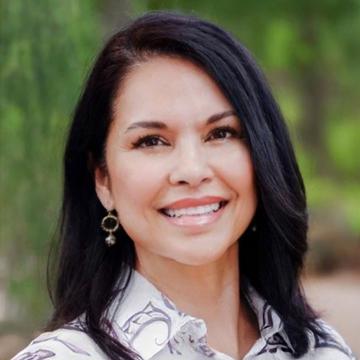
The Naturalistic Observation Diagnostic Assessment (NODA) established in 2015 by Behavior Imaging, in collaboration with the Southwest Autism Research and Resource Center (SARRC) and Georgia Institute of Technology. NODA is a diagnostic tool that allows families to collect semi-structured videos in their home in 4 different situations, upload them to a secure web-based platform, and share them with a diagnostic professional who is trained to use NODA. This investigative team has conducted several research projects on the validity of the NODA process and found, when used alone (that is, no other diagnostic procedures) it agrees with the in-person assessment process in 85% of cases (Smith et al., 2016). As NODA is asynchronous telehealth technology, it allows the behavior samples to be collected without the involvement of a clinician, which saves valuable clinician time.
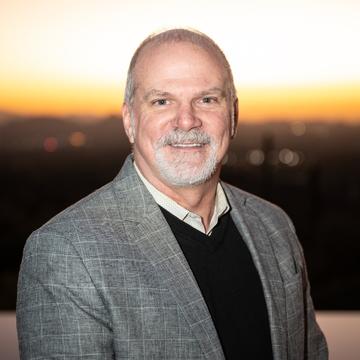
This descriptive study explores the application of implementation science best practices across a large portfolio of digital health solutions implemented by Mayo Clinic’s Center for Digital Health’s Practice Enablement teams since the COVID-19 pandemic.

Join this discussion on how Texas Tech University Health Sciences Center, a URAC accredited telehealth system, has leveraged data-models, technology, and proactive management to mitigate provider shortages for patient care across a 21 facility health network covering 64,000 square miles in mostly rural West Texas. The Managed Care division has trained ALL primary care providers (30+) and mental health providers (16 providers and 29 mental health professionals) as telehealth providers, and has created staffing models from historical data, and used data systems to plan for provider resource allocation most appropriately. The data systems also allow quick pivoting for provider load-balancing when one facility may have a spike in access-to-care demand: providers can dedicate themselves to their primary care clinic, but then quickly pivot to Telehealth All to see patients at other locations effortlessly. The presentation will cover the data modeling, the systems used for provider availability and pivoting, and how the division engaged all of the impacted professionals to ensure that provider and patient experience was optimized.
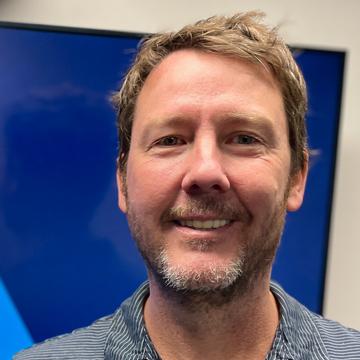


With well established clinical & patient engagement outcomes, why is this treatment path under utilized in primary care? We’ll look at the benefits, obstacles and opportunities to leverage Ai to transform rather than replace the physician patient relationship towards delivering the best possible outcomes.

Dead Wrong: Diagnosing and Treating Healthcare’s Misinformation Illness
Books available for purchase through Barnes and Noble, Booth #1037 (P).

Join NAMSS President Lisa Goodwin for an overview of the NAMSS/ATA relationship and the Credentialing by Proxy Guidebook, which was developed in 2019 and updated in 2022 as a joint effort between NAMSS and ATA. The Guidebook provides medical services professionals and other interested readers information about the basics of Credentialing by Proxy, its advantages over the traditional credentialing processes, and the legal and regulatory landscape for credentialing. Proxy credentialing can be an effective time-and cost-saving tool for hospitals using telemedicine, but its implementation requires careful attention to legal and regulatory considerations. Credentialing by Proxy is now permissible and feasible, but it is essential that hospitals understand and follow these requirements as they establish or modify proxy-credentialing programs. The NAMSS-ATA Credentialing-by-Proxy Guidebook provides this guidance.

Join us for an uplifting and thought-provoking dialogue that celebrates the indomitable spirit of human ambition. “Mind Shift” will leave you inspired, empowered, and ready to embark on your own journey of transformation. Get ready to challenge the status quo, embrace uncertainty, and discover that with the right mindset, anything is possible.


A qualitative study was conducted to identify themes about the impact of telehealth medication for opioid use disorder treatment (teleMOUD) on a cohort of physicians, physician assistants and nurse practitioners who primarily provide teleMOUD care. Eighteen providers gave insights about the effects of teleMOUD on themselves and their patients.

Little data exists to date regarding effective interventions to improve emergency department (ED)-to-community care transitions for persons living with cognitive impairment (PLWCI) and their care partners. We have developed and pilot tested innovative artificial intelligence (AI)-enabled digital advisors as assistive technology to improve ED-to-community care transitions for PLWCI and their care partners.


ChatGPT, MD – How AI-Empowered Patients & Doctors Can Take Back Control of American Medicine
Books available for purchase at the ATA Hub.





To maintain high quality care in a post-pandemic world of elevated virtual care use, forward-leaning health systems must provide cost-efficient support infrastructure for virtual visits. This research aims to describe the development and composition of a Telehealth Centralized Support team supporting ambulatory care in a large academic medical center.


Digital healthcare utilization has increased significantly, prompting the need to develop additional educational opportunities on interprofessional skill development in virtual settings. Assessment measures evaluating such opportunities should be reflective of the shifting digital landscape and should include themes related to communication and teamwork specific to virtual environments.
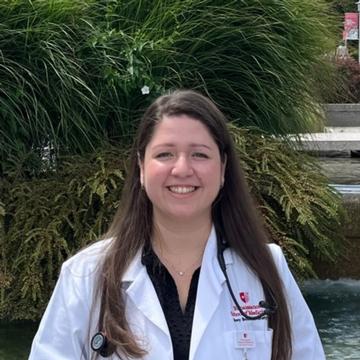
Topic: Intermountain Health Re-imagined their Telehealth NewbornCritical Care (TNCC) program whichstarted in 2013, to a full-time dedicated Telehealth Newborn Critical Care service with a Neonatologist whose sole responsibility is telehealth consultations, resuscitation guidance, hospital load balancing, and transport control.Our purpose for optimization, centralization, operational efficiencies, and a dedicated service were realized withthe reduction ofthe burden on the in-unit Neonatologist, decreased connection time, reduced newborn patient transfers, and improvednewborn provider satisfaction at level 1 and level 2 nurseries.
Methods: The dedicated TNCC service was implemented September 2022. A central physican model was implemented. Providers call 801-321-BABY for rapid video and audio connection to the TNCC Neonatologist. Data on number of calls, connection time, number of transfers, and provider feedback were collected.
Results: In the first year, a total of 1,218 calls were made to TNCC. A 50% reduction in connection was achieved. A total of 220 transfers were initiated. An anticipated 118 transports were avoided. Only 40 calls (3%) were sent to an in-unit Neonatologist. Feedback from newborn providers was overwhelmingly positive.
Conclusions: Implementation of the dedicated TNCC service reduced the burden of telehealth consultation-increasing provider satisfaction, reduced connection times, reduced transfers keeping newborns closer to their mothers, and provided greater support to our newborn provider community. We speculate that implementation of a dedicated TNCC service may benefit other healthcare systems.

Clinicians and Patients Experience with Synchronous Remote Controlled Wearable Technology: Smart body-worn haptic devices ‘learn’ a movement and ‘teach’ it back to the wearer with vibratory and audio feedback.
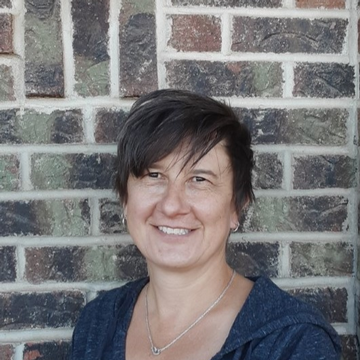
The healthcare landscape is experiencing a notable shift towards hybrid care models, integrating both in-person and virtual elements. With digital technology becoming increasingly pervasive, patients are opting for tools like video conferencing to connect with healthcare professionals, reducing the need for physical visits and minimizing wait times. However, this evolution goes beyond video consultations, extending to a comprehensive approach facilitated by Communication Application Programming Interfaces (APIs). These APIs address various healthcare needs across different channels, enabling functions such as administration, data collection, and appointment scheduling while ensuring robust verification processes.
In this session, Amitha Pulijala, Vice President of Product, AI, Video, and Platform Services at Vonage, will be joined by Dr. Esteban López, Chief Medical Officer of telehealth leader doxy.me. Together, they will delve into the transition from telemedicine to comprehensive telehealth services, emphasizing the importance of a hybrid approach in modern healthcare. By combining in-person and virtual care elements, healthcare providers can engage with patients more effectively, leading to better clinical outcomes, improved patient experiences, and streamlined workflows across the healthcare system.


Despite AI’s potential in healthcare, there exists doubt and anxiety in the industry. Join this dynamic conversation that will dig into AI and generative AI’s potential in telehealth and virtual care. Speakers will share perspectives on the roadblocks hindering adoption, decipher what AI really means in the healthcare setting, explore the innovative landscape of telehealth, virtual care and AI’s profound impact on patient care and provider workflows. This dynamic conversation will unveil the transformative power of AI and generative AI technologies and tackle some of the hype, questions and concerns surround it, with real-world examples, such as predictive analytics to personalized treatment plans – with a vision on what the future may hold.








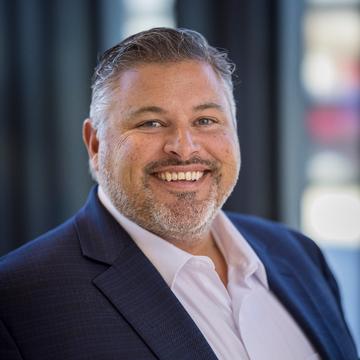

Advancements in technology are increasingly facilitating the integration of food and nutrition into healthcare practices. This session will explore innovations in transforming efforts towards achieving food equity to help ensure everyone has fair and equal acces to nutritious food options, regardless of socioeconomic status or geographic location. Speakers will share groundbreaking initiatives aimed at improving access to nutritious food, harnessing data to illuminate the efficacy of food as medicine and leveraging technology to address systemic challenges in food distribution and health outcomes. From innovative apps to data-driven interventions, we’ll examine how technology is driving tangible progress in integrating nutrition with healthy outcomes and well-being and fostering greater equity in our food systems.




Providence Virtual Care and Digital Health is no stranger to delivering telehealth services across a large geographic footprint. With well over a decade of learning in operating a 75+ site TeleStroke/TeleNeurology/TeleEEGnetwork, the system is developing and expanding into additional specialty care areas to meet its internal and external partners’ needs to address specialty care gaps. Voice of customer research helped the team understand the biggest needs to be Infectious Disease, Cardiology, and Pediatric Specialties. With new technology in place, this group will be able to rapidly iterate, connecting its panels of physicians to hospitals that struggle to have access.

Stanford Medicine’s Online Second Opinion Program leverages a direct-to-consumer clinical model, asynchronous technology platform, and loss leading business model to increase patient access for complex conditions and create opportunities for new Stanford Medicine patient growth across the globe. Hear updates on this program that connects patients and their treating physicians to Stanford specialists who provide written guidance on existing treatment plans. This empowers patients to make informed decisions in their care, and when appropriate, directs patients to Stanford for specialized services.




Hear real examples of how non-profit organizations providing health care delivery can reorganize by either spinning off a for-profit organization or creatinga Management Services Organization (MSO). In either scenario, the ability to accept private equity money for growth becomes an option.
Tania will share insights and examples of organizations that have spun out to alleviate clinician shortages, can maximize revenue and leverage private equity investment by overviewing what a Management Services Organization is, why a non-profit would form one, and how to position it for outside investment.


You know what your startup is worth, but how do you articulate it to potential investors to get them interested – especially in today’s tight investing climate? This presentation will outline which key metrics investors want to see in 2024, and how to leverage them to craft a winning pitch deck with a persuasive narrative. It will also cover proven tips for finding the right investor aligned to your business, and effectively communicating the value and scalability of your startup.
Not all money is made equal the audience will receive first-hand insight into emerging trends, regulatory changes and market dynamics that are shaping the investment landscape.

Texas Child Health Access Through Telemedicine (TCHATT) is a state supported program that seeks to improve the mental health of communities across Texas through collaboration with independent school districts (ISDs). TCHATT leverages the expertise and capacity of the health-related institutions of higher education to address mental health challenges and improve the mental health care system in thestate forchildren and adolescents. The program assists in directing counseling and telepsychiatry to students, link families with community resources, and provide educational materials for school personnel through community learning collaboratives.



This session will explore the growing expansion of remote therapeutic monitoring in telerehabilitation to provide chronic disease and acute condition management, address musculoskeletal dysfunction, and promote wellness and prevention services at home. Speakers will highlight current RTM technologies, clinical policy, use cases across different patient populations and settings, standards of care, service and payment methodologies to boost revenue, and necessary federal and state compliance for a successful integration.
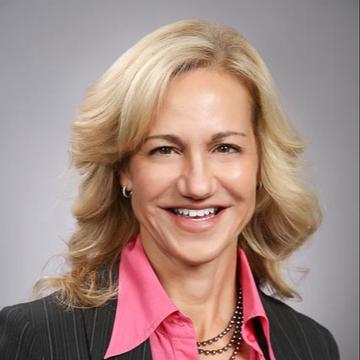

Amidst the rapidly evolving landscape of healthcare, the integration of virtual care has emerged as a pivotal strategy to enhance access, efficiency, and quality of healthcare services worldwide. This session will explore the global landscape of virtual care, shedding light on the priorities driving its adoption worldwide. From addressing healthcare workforce shortages to overcoming the challenges inherent in implementing virtual care solutions, our experts will share their experiences and insights. Discover how telemedicine is being leveraged to bridge gaps in healthcare accessibility and deliver quality care to remote and underserved populations. Through success stories and emerging trends in international telehealth, gain a comprehensive understanding of the transformative potential of virtual care in modern healthcare delivery.













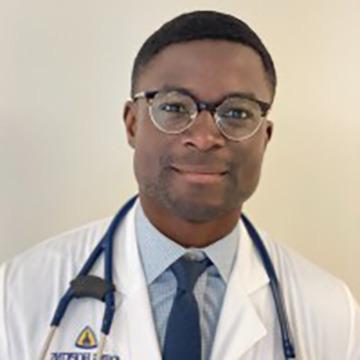



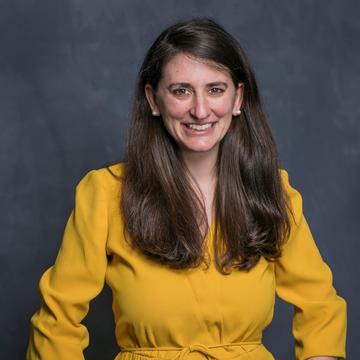
The University of Mississippi Medical Center (UMMC) is at the forefront of revolutionizing healthcare access in rural Mississippi, particularly the Delta Region, through innovative telehealth solutions. In 2017 UMMC was recognized as one of only two federally designated Centers of Excellence in Telehealth and with this designation UMMC is tasked by the Health Resources and Services Administration (HRSA) to explore innovative ways to advance telemedicine practice. This session will explore UMMC’s commitment to applying the structure of the Center for Excellence for telehealth to address the healthcare challenges faced by underserved populations. By leveraging its expertise and strategic partnerships with other organizations throughout the country, UMMC seeks to bridge the gap in healthcare delivery for remote areas. Through this initiative, advanced telehealth technologies and dynamic virtual workforce solutions combine to reshape healthcare delivery, ensuring comprehensive and timely services for Mississippi’s rural communities. Results from this deployment model of People Process and Technology will be provided to serve as a reference tool to provide a scalable model for others.




UPMC Health Plan’s Rxwell is a mobile application that offers coach-supported health and wellness programs, focused on physical and behavioral health. Learn more about programming, research to date, current outcomes, enhancements, and growth of the product as well as additional research opportunities. Hear challenges with engagement and efforts to increase utilization.




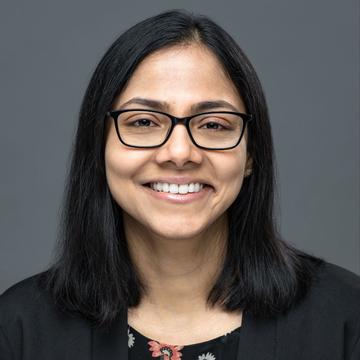
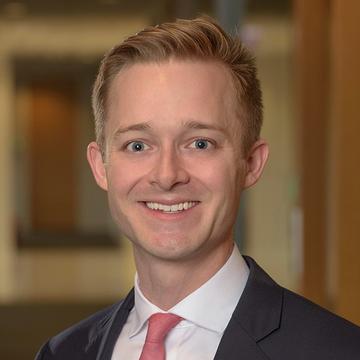






This session will allow participants to learn about new telehealth programs and research efforts across the Department of Health and Human Services (HHS).

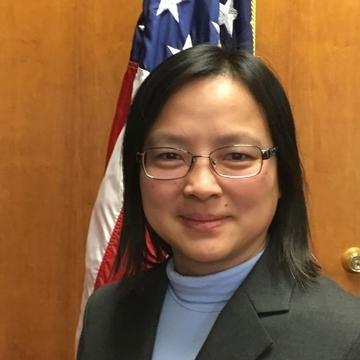






Duke University Health System (DUHS) is a national leader in digital strategy and telehealth innovation, comprising three acute care hospitals, more than 250 ambulatory clinic and surgery center locations, and over 3,000 physicians and advanced practice providers. Speakers will discuss opportunities and challenges in scaling and sustaining digital care services, concrete examples of why and how DUHS has created innovative digital care delivery approaches to improve access, patient experience and quality. Duke has achieved both scale and measurable outcomes, with improved access to clinics and reduced hospitalizations. Initiatives and case studies to be discussed include centralized telehealth visit support, virtual nursing and e-consults, teledermatology and endo-oncology. There are innumerable challenges facing major healthcare systems today. Digital and telehealth innovations offer part of the solution to these challenges. We are excited to share our drivers, our challenges, and our learnings to date at Duke Health.
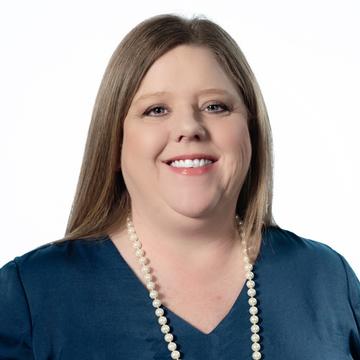



Hospitals and health systems are forging affiliations and integrating systems to meet broader diverse community healthcare needs. Collaboration among healthcare organizations is paramount to increase access to care for underserved communities, outcomes, and experiences. Collaborative alliances may improve the overall performance of organizations to achieve strategic goals, regulatory requirements and other organizational priorities.
Organizations may face common barriers during system integration. Some of the challenges may include: differing organizational structure, policies, business models and culture; lack of EMR/technology integration, interoperability, and data collection; credentialing and privileging processes; as well as opportunities related to communication among stakeholders and clinician engagement. Leaders and clinicians across systems must collaborate to address barriers, expand the reach of clinicians to underserved communities and support a hybrid care delivery approach.
This session will describe best practices and lessons learned of healthcare systems in creating effective affiliations and community partnerships to support health equity and strategic alignment.
The session will:
- Provide key practices and strategies to bring health systems together to address a wide range of identified priority health needs in the community, set collaborative goals/objectives, and support effective leadership/governance
- Discuss best practices to engage internal and external stakeholders including leaders, clinicians, patients and families
- Present effective implementation practices during program development and project management to support successful integration and sustainable business models
- Discuss how to align care programs and staff with hospital-wide strategic initiatives, program evaluation and in assessing partnerships
- Offer strategies to support data-driven initiatives, leverage technology and communicate results, such as publication of dashboards and quarterly operating reviews
- Utilize cases and quality/process improvement projects to show positive outcomes in promoting health equity for diverse underserved populations
Learning Objective 1:
Recognize the impact of strategic affiliations and community partnerships in meeting organizational priorities related to access, supporting health equity and addressing a wide range of community health needs
Learning Objective 2:
Identify best practices in organizational structure, shared governance and other strategies to develop evidence-based interventions, streamline operations, and promote integration across systems
Teaching Methods Used: Lecture with question and answer OR panel discussion
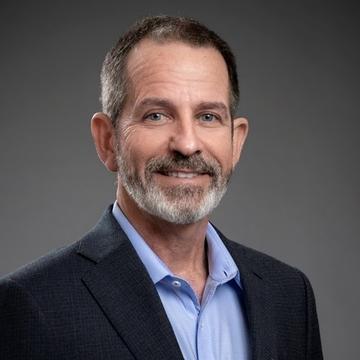


UPMC VirtualCare is a “digital first” insurance plan that promotes the utility of telehealth to drive successful health outcomes and patient experience. While UPMC is not the only payer with a digital first plan, it is one of the only ones that connect members with hybrid providers, so members can choose the best way to get their care- in person or virtually.

The creations of the mind e.g. inventions; designs; symbols, names and images used in business, and literary and artistic works; are protected in Intellectual Property (IP) law through patents, copyright, trademarks Protecting IP safeguards people so that they can reap the recognition and benefit from what they create. Protecting the balance between the interests of creators/innovators and the public cultivates creative and innovative environments. The unauthorized acquisition, use or disclosure of protected information is considered a violation of IP protection. BUT, since many healthcare applications and algorithms are developed with subject matter expert (SME) team members from healthcare institutions and academia alongside the developer/vendor SMEs, determining who owns what part of the protected information can be difficult. This session will define intellectual property, describe what “code sharing” is and how it works, and examine the practical implications of what constitutes unauthorized acquisition, use or disclosure of secret information that may be protected by IP laws.
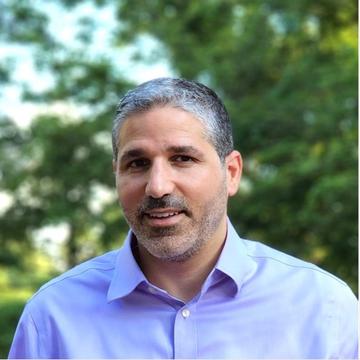





The burden on our clinicians isn’t getting any lighter. How can tech-enabled solutions step in to ease the clinician’s load? This session will explore what’s keeping our docs up at night and how digital innovations can help relieve burnout, provide personalized and actionable insights to clinicians, streamline, and even improve team processes and workflow. Speakers will discuss how these solutions can make a difference in transitioning between virtual and in-person care and create a more comprehensive remote clinical experience.

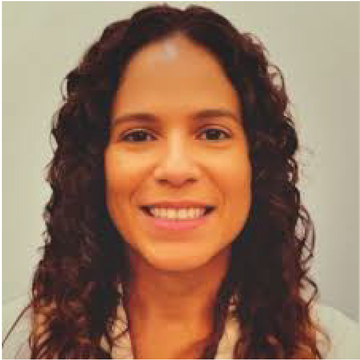


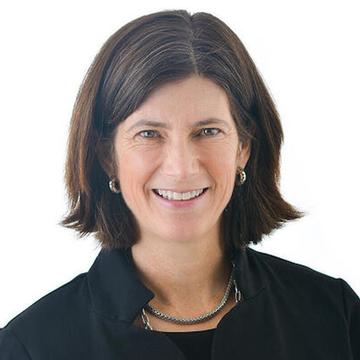









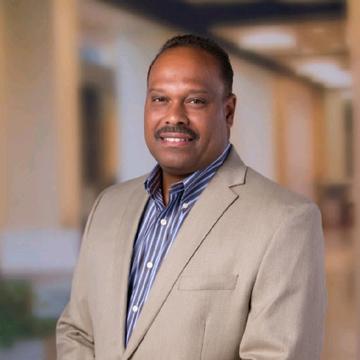





Many rural communities have limited access to a variety of resources, and that certainly includes health care services. When those rural communities do have access to health care, it is often limited to primary care. When Specialty care services are required, patients must travel, sometimes a great distance to receive care. Through technology and planning Atrium Health is scaling Specialty Care virtual services throughout four states the system serves, expanding services and capabilities to rural and underserved communities. This session will explore Atrium Health’s uniformed approach to virtual specialty care across our rural footprint; outline the process for identifying the needs of the rural communities; the approach to prioritization across the various markets and; how the team implemented the solutions in an established tiered approach. Other topics will include infrastructure and technology needs; executive alignment; funding and; engagement of the various medical staffs.

Speakers from New York Presbyterian will explore how telemedicine is revolutionizing prehospital emergency care, from enabling remote consultations to facilitating treatments (including management of high-risk heart failure patients, external cardiac support device patients) and procedures (heart-lung bypass, stroke care) in the field. Leveraging insights from our research and clinical practices, the session will delve into real-world applications, challenges, and future prospects of integrating telemedicine in EMS. This discussion will offer invaluable perspectives for healthcare providers, policymakers, and innovators committed to advancing telehealth as a critical component of emergency medical services.
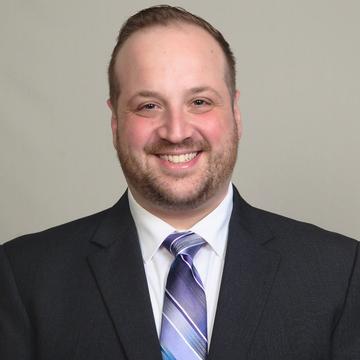

The ATA Nexus 2024 Telehealth Innovators Challenge is an exclusive opportunity for companies to present their latest, game-changing innovation in front of key stakeholders, investors, decision-makers and the global healthcare industry. Two rounds of judging almost complete, our 12 finalists will be announced soon and will present how they are using telehealth to transform the future of healthcare in a live pitch competition at ATA Nexus 2024! A panel of expert judges – and the whole telehealth industry through online voting – will determine who has the innovations that will impact care delivery and create a modernized, hybrid care delivery system! #telehealthishealth
5:15 -5:25 PM Welcome and Introductions: Emcee: Samir Batra
5:25 – 6:36 PM Presentations:
FEMTECH AND WOMEN’S HEALTH
Julia Stark, VP of Product Development, Leva Pelvic Health System – Axena Health
Judith Nowlin, CEO, Nest Collaborative – Nest Collaborative
Eric Dy, Founder and CEO, Bloomlife Inc – Bloomlife
IN-PATIENT CARE SOLUTIONS
Sam Holliday, Co-founder and CEO, Oshi Health Virtual GI Center of Excellence
Noel Khirsukhani, Chief Growth Officer, ThinkAndor®- Andor Health
Maryam Sadeghi, CEO and Co-Founder, DermEngine AI-Powered Care Coordination – MetaOptima Technology, Inc.
THE PATIENT EXPERIENCE
Ryan Grant, MD, MS, MBA, FAANS, Founder & CEO, Vori Helath
Kwamane Liddell, JD, MHA, BSN, Founder and CEO, ThriveLink
Maria Kunstadter, CEO, The TeleDentists
TOOLS THAT DELIVER CARE
Tero-Pekka Alastalo, MD, PhD, President, CardioSignal, Inc.
David Kuraguntla, DO, CEO, Alio Remote Monitoring Platform
6:40 – 7:00 PM Fireside Chat: Where Are They Now?
Moderator: Samir Batra
Andrea Ippolito, CEO and Founder, Simplifed
Tomer Epstein, Director of Strategic Partnerships, Bio-beat
7:00 PM Announce:
Judges’ Top winner per category
Judge’s Top Choice
Peoples’ Top Choice
7:00 – 7:45 PM Reception








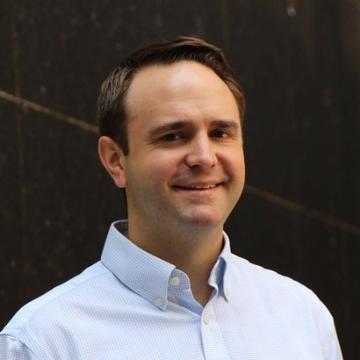










In an era where innovation drives transformation, the landscape of healthcare delivery is continuously evolving. The emergence of disruptors has revolutionized how patients and consumers engage with healthcare services. Leveraging cutting-edge technology, we are witnessing a paradigm shift in the accessibility and delivery of care. WeightWatchers, a renowned name in wellness, has boldly ventured into the telehealth realm, extending its expertise to offer metabolic health services to its consumers. This strategic move not only showcases the organization’s adaptability but also underscores the pivotal role of technology in reshaping the healthcare ecosystem. Join us as Dr. Amy Meister, a leading authority in virtual care, illuminates the possibilities and potentials of telehealth in optimizing both patient and consumer experiences. Through insightful perspectives and real-world examples, Dr. Meister will navigate the transformative power of virtual care, illustrating how it transcends geographical barriers to deliver personalized, efficient, and effective healthcare solutions.

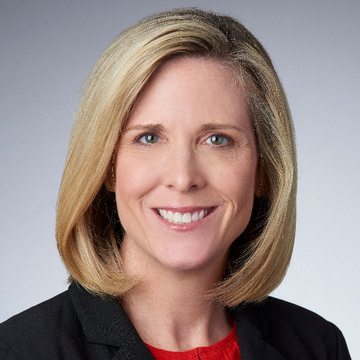
As the industry grapples with unprecedented demands and disruptions, virtual care emerges as a vital tool in supporting frontline caregivers. In this dynamic session, renowned nurse thought leader Bonnie Clipper, joined by Rich Kenny, will shed light on the critical challenges facing healthcare’s workforce. With a focus on nurses and care teams, Clipper will share her expert perspectives on the evolving landscape of healthcare delivery and how technology can enhance patient outcomes while alleviating the strain on healthcare professionals.




Jeff Caron, GE HealthCare Digital Leader and former AWS Healthcare and Life Sciences Industry and Innovation Leader, discusses new ways to integrate disparate pools of device and platform data across patient care needs to augment care delivery and enhance operations at scale. As we characterize the changing healthcare landscape and the expansion of home-based care, we explore how to meet rapidly evolving needs in health care, including forging partnerships across industry and health systems.


Delve into the critical priorities for mental health in today’s society with Patrick Kennedy, founder of The Kennedy Forum and a leading advocate for mental health awareness and policy reform. Joined by MJ Abdul-Majid, Strategy Counsel at Google, Patrick will share his insights into the pressing issues facing mental health care, from access and affordability to destigmatization and equity.


Amidst evolving challenges and unprecedented disruptions, restoring trust in healthcare has become paramount. This important conversation will address the critical issue of trust within the healthcare industry and explore strategies for rebuilding confidence among patients, providers, and stakeholders. Speakers will examine the factors eroding trust, highlight successful initiatives, and discuss innovative approaches to foster transparency, empathy, and accountability in healthcare delivery. Together, let's explore how collaborative efforts and technological advancements can pave the way for a more trustworthy and patient-centric healthcare ecosystem.









This immersive program delves into the essential aspects of implementing telehealth today and building a practice that stands the test of time. Join us as we explore key components, including mapping an integration plan, vendor-health system communication, project management and logistics, market navigation, legal and regulatory considerations, and becoming an effective virtual provider. Equip yourself with the knowledge and skills needed to not only implement telehealth effectively but also to cultivate a sustainable practice in today's dynamic healthcare landscape.
10:30 – 10:35 AM Welcome
10:35 – 11:05 AM Begin with the Basics: Building a Telehealth Program Primer
Learn the essentials of mapping out an integration plan, primary coniderations in building your program, how to get buy-in from your C-suite and how to build partner collaborations between vendor and health systems.
11:05 – 11:55 AM It’s All in the Details: Project Management and Operations
Understand the project management, operations and logistics steps that are needed to support getting things done and setting up your team for success. This session will outline what’s necessary to oprimize technology and workflows for better care team and patient experiences and the administrative elements needed in implementing a program from pilot to scale, understanding the inpatient consent process, and creating guidelines for care teams to help them in their roles.
12:00 – 12:30 PM Lunch
12:30 – 1:15 PM Making Sense of the Market: Technology and Big-picture Decision-making
In a market saturated with technology and vendor choices, what are the considerations you need to make in evaluating the myriad solutions? This session will help you assess core benefits and value, how to evaluate and choose the right partners, lessons learned when approaching vendor partnerships and how to build partnerships for success. Explore the key components of building a robust virtual care infrastructure, including technology selection, staff training, and workflow integration, and AI’s role in virtual care.
1:00 – 1:30 PM Legal and Regulatory Essentials in Virtual Care
Understand the challenges, pitfalls, and lessons learned in navigating regulatory and reimbursement landscapes in virtual healthcare delivery.
1:30 – 2:00 PM Mastering Virtual Care: Strategies for Effective Virtual Healthcare Delivery
In today's rapidly evolving healthcare landscape, the ability to effectively deliver care virtually is paramount. This session will discuss key strategies for becoming a proficient virtual provider. Participants will gain insights into optimizing clinical care efficiencies, enhancing patient encounters, and building an effective “webside manner” and cultivating a strong online presence.
2:00 PM Close

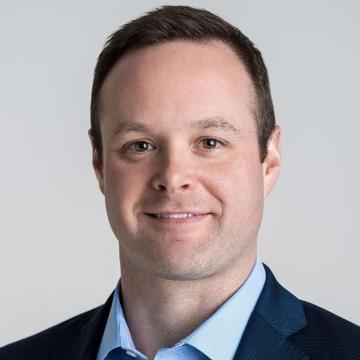




Join the Peterson Health Technology Institute (PHTI) for a discussion on innovation and evidence generation in the digital healthcare space. What are they types of information that purchasers are seeking to assess value in the digital health space? How can innovators effectively demonstrate the clinical and economic value of their solutions to key buying audiences? How can the digital health community work together to increase purchaser confidence in digital health solutions and drive the adoption of high value technologies?

Profiles in Mental Health Courage
Books available for purchase through Barnes and Noble, Booth #1037 (P).
Telehealth and virtual care provide the ability to access care when and where a patient needs it most. This session will share perspectives from the patient, caregiver and provider angles on why the instant access to care that telehealth provides is so valuable.
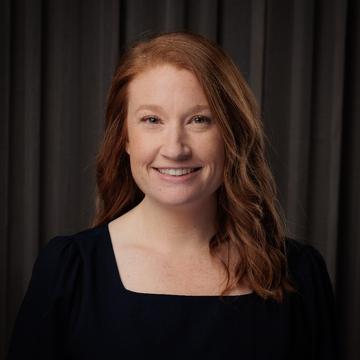

Join the ATA Government Relations SIG and State and Federal policy teams in an open forum to discuss latest topics of interest around latest telehealth public policy priorities and challenges.
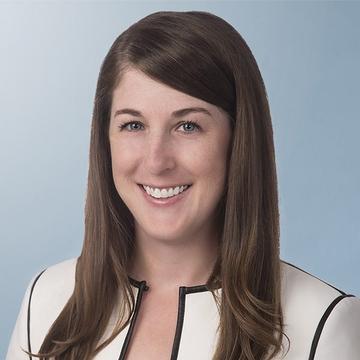
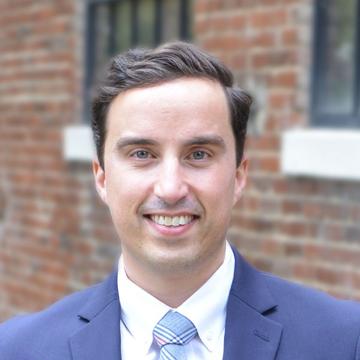
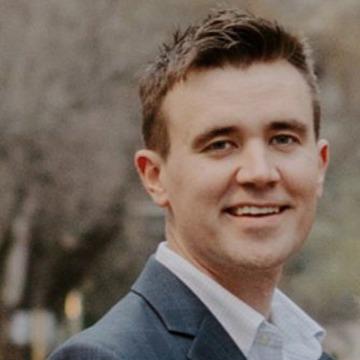
Telehealth has been proposed as one strategy to improve the quality of time-sensitive sepsis care in rural emergency departments (EDs). The purpose of this study was to measure the association between telehealth-supplemented ED (tele-ED) care, healthcare costs, and clinical outcomes in patients with sepsis in rural EDs.

Staffing shortages and mounting financial pressures across United States hospitals have inspired innovative interventions to support nurses. Novel technologies that facilitate seamless, remote connection with patients has led to the rise of virtual nursing (VN). This study explores the impact of a VN pilot at a large academic medical system.


Join Amwell in a fireside chat with Sally Eckford, senior vice president of virtual care at Wellstar Health System, as she discusses the health system’s implementation of a virtual nursing program and the impact that has had on nursing staff satisfaction and retention. She will also discuss how its overall hybrid care strategy has improved patient and clinician experiences, and where they hope to expand in the future.

We describe the process of conducting eye camps with the aid of teleophthalmology bus and review results to determine major causes of blindness in Tamil Nadu, India.
Authors: Dr. Sheila John, Head of Teleophthalmology
Affiliations: Department of Teleophthalmology, Sankara Nethralaya, Chennai, India.
Key words: Teleophthalmology, rural eye care and Blindness.
Aim & Objective: We describe details of the process of conducting eye camps with the aid of teleophthalmology bus and review results to determine major causes of blindness in Tamilnadu in India.
Material & Methods: The teleophthalmology unit is a mobile van, which would have paramedical staff and state of art ophthalmic equipment. The rural teleophthalmology units of Sankara Nethralaya had conducted camps from April 2010 to August 2023. Patients underwent comprehensive eye examination at the campsite. Prospective review of the patient Electronic medical records (EMR) and teleconsultations were done. Ophthalmologist Consultation with the patient at the campsite was achieved by means of teleconsultations to the base hospital by using internet connectivity (256–512 Kbps) with laptop and web camera.
Results: Over the 13-year study period, April 2010 to August 2023, 2404 camps conducted in Tamilnadu, 237942 patients underwent evaluation and about 5410 teleconsultations. Among these, uncorrected refractive errors were the commonest cause of avoidable blindness (104437), followed by cataract (31431) and Retinal diseases (5387) .
Conclusion: Teleophthalmology unit conducting Comprehensive eye examinations is a very effective tool to prevent blindness in India.

Navigating the journey to autism diagnosis has long been a stressful and time-consuming process for families, often spanning months to years, delaying crucial intervention and impacting the well-being and development of their child. Now more than ever, technology provides the power to expedite autism diagnosis and intervention. Speakers will share innovative approaches that combine cutting-edge tech with expert care to streamline the diagnostic process, providing answers within weeks rather than months. Discover the impact of early intervention on long-term outcomes and how technology and tailored support empowers families every step of the way.



Join this session to learn more about telehealth’s impact on the rare disease community. Why it’s important, what’s working, and how it’s improving care experiences for patients and caregivers.

Nurses have been at the forefront of sepsis screening and targeted therapeutic interventions for decades. The focus of this session is to review published work related to the history of virtual nurses using surveillance techniques supported by clinical decision support tools to screen for sepsis and advocate for care execution.



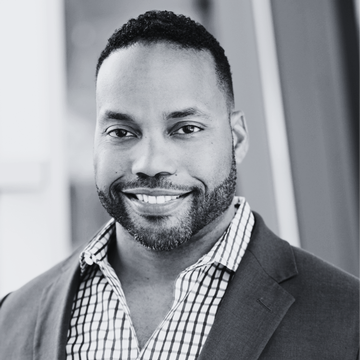

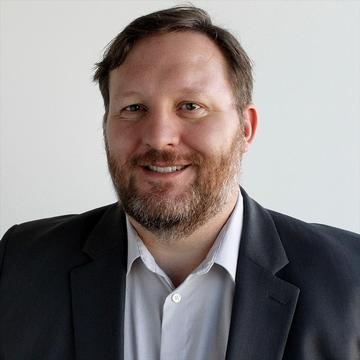
Mayo Clinic Center for Digital Health Case Study: Development of a scalable deployment and operations model for diffusing Remote Patient Monitoring across the care continuum resulting in improved health outcomes, reduced utilization of care, and improved support for care teams and patients.

Through a well-tested participatory research and development (R&D) methodology involving end-users, we aim to create a psychoeducational website to expand appropriate virtual and multimedia content specifically designed for Spanish-speaking children, teenagers, young adults, and their caregivers in Bogotá, Colombia.

A paucity of robust evidence exists on how clinician empathy is perceived in virtual care settings. The study objectives were (1) to adapt a standard provider empathy scale to asynchronous telemedicine, and (2) to describe the level of provider empathy as perceived by current patients across various specialty care encounters.

The platform (interface and content) has been co-designed and co-developed with young people to engage and empower them to seek help and self-manage their mental health through targeted resources, free tele-counselling, a self-designed wellbeing plan, an SOS button and monitoring tools to track their health and progress.

The Innovation Handbook: A Nurse Leader’s Guide to Transforming Nursing
Books available for purchase through Barnes and Noble, Booth #1037 (P).

In the context of a multicenter comparative effectiveness study of clinical outcomes related to provider-to-provider telehealth use for sepsis in rural emergency departments, we conducted a qualitative study to understand how and why telehealth may augment sepsis diagnosis and treatment in rural low-volume centers.

To model the cost-effectiveness of hybrid telehealth, it is important to compare the combined costs of in-person and online services against their benefits. The analysis of expenses like technology and staffing against advantages such as improved health outcomes, accessibility, and reduced operational costs, determine the value of the hybrid approach in healthcare delivery.

This study examined the proxy use of patient portals for children in a large Federally Qualified Health Centers (FQHC) network in Texas. We analyzed de-identified individual-level data of pediatric patients and used logistic regression to examine patient-, clinic- and geographic-level factors associated with proxy portal usage.

Traditionally, Hispanic communities experience inequities in telehealth services; however, recently, there has been a positive trend in telehealth utilization. We aim to promote this trend by identifying characteristics of Hispanic individuals less likely to use telehealth. Without attention to the most vulnerable, we propel inequities among subgroups of communities.



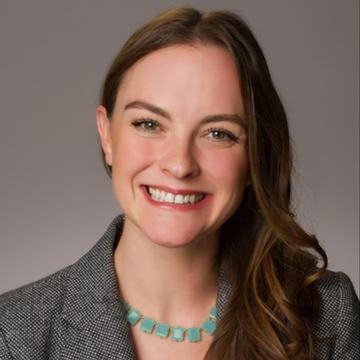






Now more than ever, the transformative power of technology is poised to revolutionize the patient care journey, empowering individuals to take control of their health like never before. This session will unlock the potential of virtual health solutions to empower individuals across all age groups to take charge of their health and enact meaningful behavior change. Speakers will share perspectives in how virtual health solutions can create meaningful engagement and drive lasting behavior change across generations, primary care and the pivotal role of AI in optimizing patient engagement and tackle the crucial issue of trust in data sharing and how it impacts health outcomes. Through case studies and insights, learn how digital health tools enable proactive identification of medical events, inform preventive interventions, and foster sustainable behavior change. Explore innovative care models, both virtual, coach- and provider-led, aimed at managing chronic diseases and creating sustainable behavior change for long-term wellness.
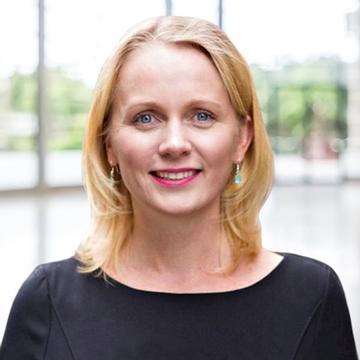




This diverse panel of industry leaders, innovators, and regulators will offer a multifaceted view on the integration and impact of digital therapeutics in patient care.






Jennifer Junis and Dr. John Vozenilek, both leaders in the digital health space for OSF HealthCare, will share how to translate an innovation strategy into action within a health care delivery system. As part of this presentation, Junis and Dr. Vozenilek will bring participants through the journey the organization took to build OSF OnCall, the digital arm of OSF HealthCare, including investing in the foundational components of data, simulation, academic partnerships and portfolio management; setting a vision for digital transformation; and creating guiding principles that lead to action. This session will also breakdown the programming offered as a result of this work, such as the OSF OnCall Digital Hospital, enterprise-wide virtual ICU/hospitalist/nursing and remote patient monitoring for chronic disease, pregnancy and behavioral health.
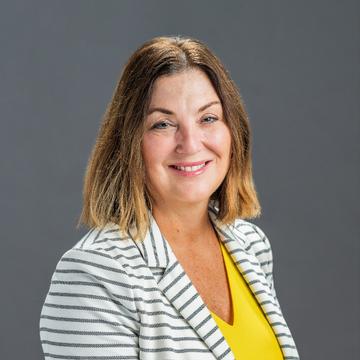
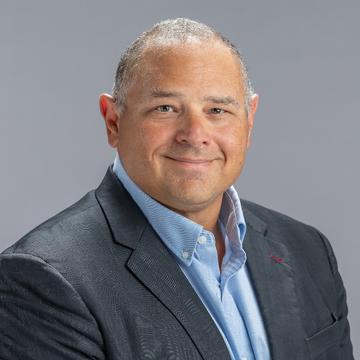
University of Maryland operates a state wide medical system with 11 hospitals, 3 freestanding EDs, and more than 150 outpatient clinics and urgent care centers. Like most large healthcare organizations, centralized processes have to balanced with independent practitioner and patient needs to adequately deliver high quality healthcare. With insight on intra-system collaboration, contracting, policy, reimbursement, value based care, licensing, multi-facility credentialing, and the importance of overcoming telehealth barriers and inequities, Dr. Anthony Roggio has led the telehealth charge at University of Maryland throughout the pandemic and in the shifting post-pandemic world in his role as the UMMS Medical Director of Telehealth. Learn from the University of Maryland experience, and Dr. Roggio, as he identifies goals, common roadblocks and solutions for telehealth development in healthcare systems.

As the healthcare landscape changes, academic medical centers sit at the nexus of healthcare innovation, education, delivery, and thus play a critical role in shaping the future of healthcare. Emerging from the pandemic, the Medical University of South Carolina (MUSC) one of only two national telehealth Centers of Excellence made key investments to build a virtual ecosystem for the future. These include implementation of fully virtual service lines; investments in global telehealth platforms that are EHR-integrated and AI-powered; development of a nurse-led, centralized support team to assist ambulatory telehealth visits enterprise wide; and an increased focus on telehealth equity. This session will explore the challenges and strides one academic medical center is making to create a virtual ecosystem of the future. Discussion will touch on MUSC’s marquee inpatient, outpatient, and population health telehealth programs, with a focus on recent innovations.

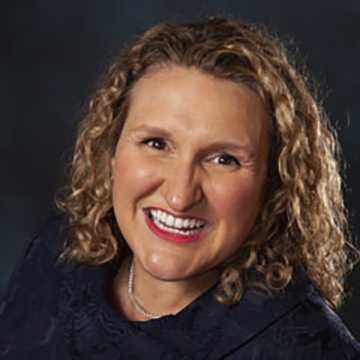








Leaders in clinical and innovation fields will discuss the transformative impact of technology on healthcare settings, the ongoing evolution of virtual care, and their insights into the most promising opportunities on the horizon. What might innovative models of care delivery look like, ones that genuinely empower consumers and enhance provider engagement? Simultaneously, we will explore strategies for overcoming significant industry challenges, such as workforce shortages, burnout, lower productivity, and the role that mobility plays in ensuring equitable access to quality care. How will these challenges shape the future of care delivery, ensuring that patients receive optimal care and clinicians are adequately supported to practice at the highest level of their licensure?


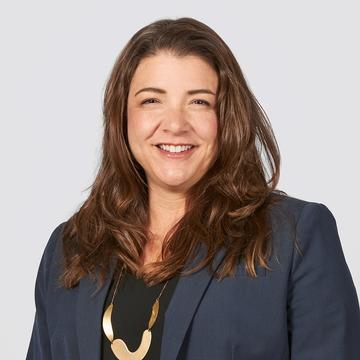

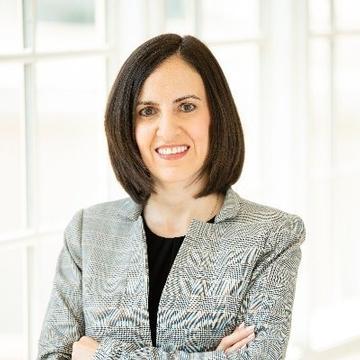









As the global healthcare landscape evolves, decentralized clinical trials (DCTs) have emerged as a dynamic solution, leveraging digital technologies to revolutionize traditional trial methodologies, enhance patient engagement, and streamline data collection processes. In this session, speakers will unravel the latest innovations in DCTs, discuss effective implementation approaches, and uncover invaluable lessons gleaned from real-world experiences. Join us as we navigate the intricacies of DCTs and unlock the potential of patient-centric trial methodologies to help lead to a more diverse and inclusive patient set in therapeutic development.



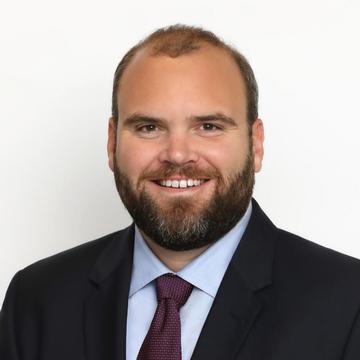










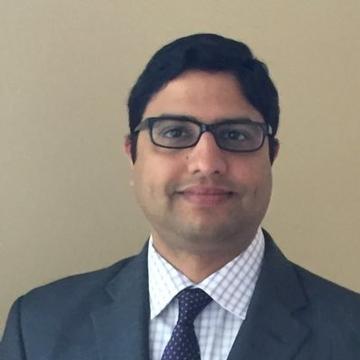


Hear lessons learned expanding remote patient monitoring within a rural health system to help address some of the constraints inherent in rural healthcare. Maine is the most rural state in the country, with just over 60% of the residents living in rural communities. For patients, it may require traveling long distances for their in-person appointments.For the healthcare system, there are a limited number of specialists and primary care providers in the state. Recruiting and staffing rural practices can be challenging, and using virtual teams within the health system can help increase a patient’s ability to connect with care. MaineHealth has implemented several remote patient monitoring (RPM) programs, including Type 2 Diabetes Management and Congestive Heart Failure (CHF), with more programs, including hypertension, in the pipeline. Hear about MaineHealth’s remote monitoring programs with dedicated clinical teams and its impact on primary and specialty care, helping to provide the right care at the right time at home.

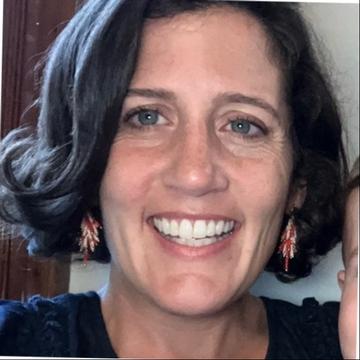
Remote monitoring technology and electronic patient reported outcomes (ePROs) support healthcare’s shift of bringing care home. It addresses episodic care gaps by providing visibility between visits and opportunities for timely intervention. Stanford Medicine tested digital tools’ ability to aid home-based care in ambulatory clinics. A multidisciplinary team implemented three distinct pilots in specialty care (oncology and orthopedic surgery) and primary care (hypertensive patients). The multi-staged pilots tested patient and provider enrollment, engagement, and satisfaction across 187 patients and 31 clinical end user participants. Patient enrollment spanned from 47-75 patients and engagement ranged from 56%-84% across each of the three 6 month pilots. The group evaluated key features for higher enrollment, satisfaction, and clinical usability that led to these varied results. The workgroup was able to gain leadership consensus, overcome challenges, and rapidly execute a remote monitoring enterprise program with centralized technical, clinical, and programmatic support. Their key findings are beneficial to health systems looking to implement centralized remote monitoring at scale.


As many health systems stood up care at home programs during the Pandemic, AU Health created an innovative care delivery model that allows patients to move through the continuum of care based on their needs and acuity. AU Health’s Virtual Care at Home program encompasses multiple workflows under one at home virtual delivery method by creating a model of care that fits the patient’s needs including acute care at home, observation at home, early discharge management, pre-and-post surgical monitoring, pre-and-post partum monitoring, and chronic disease remote monitoring. These programs create a delivery system in which patients can travel through the various programs to ensure continuity of care, increased access to health care team members within virtual care and outside virtual care, while also ensuring increased patient outcomes and satisfaction. This presentation will take the audience through the continuum care model and how each workflow supports the other, and the shared goals and objectives that make this program successful.
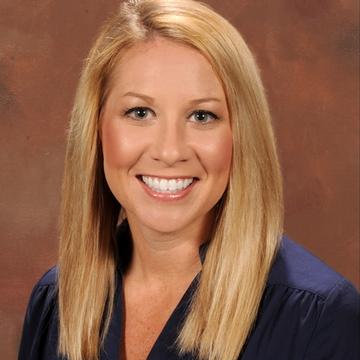

Nexus Social
